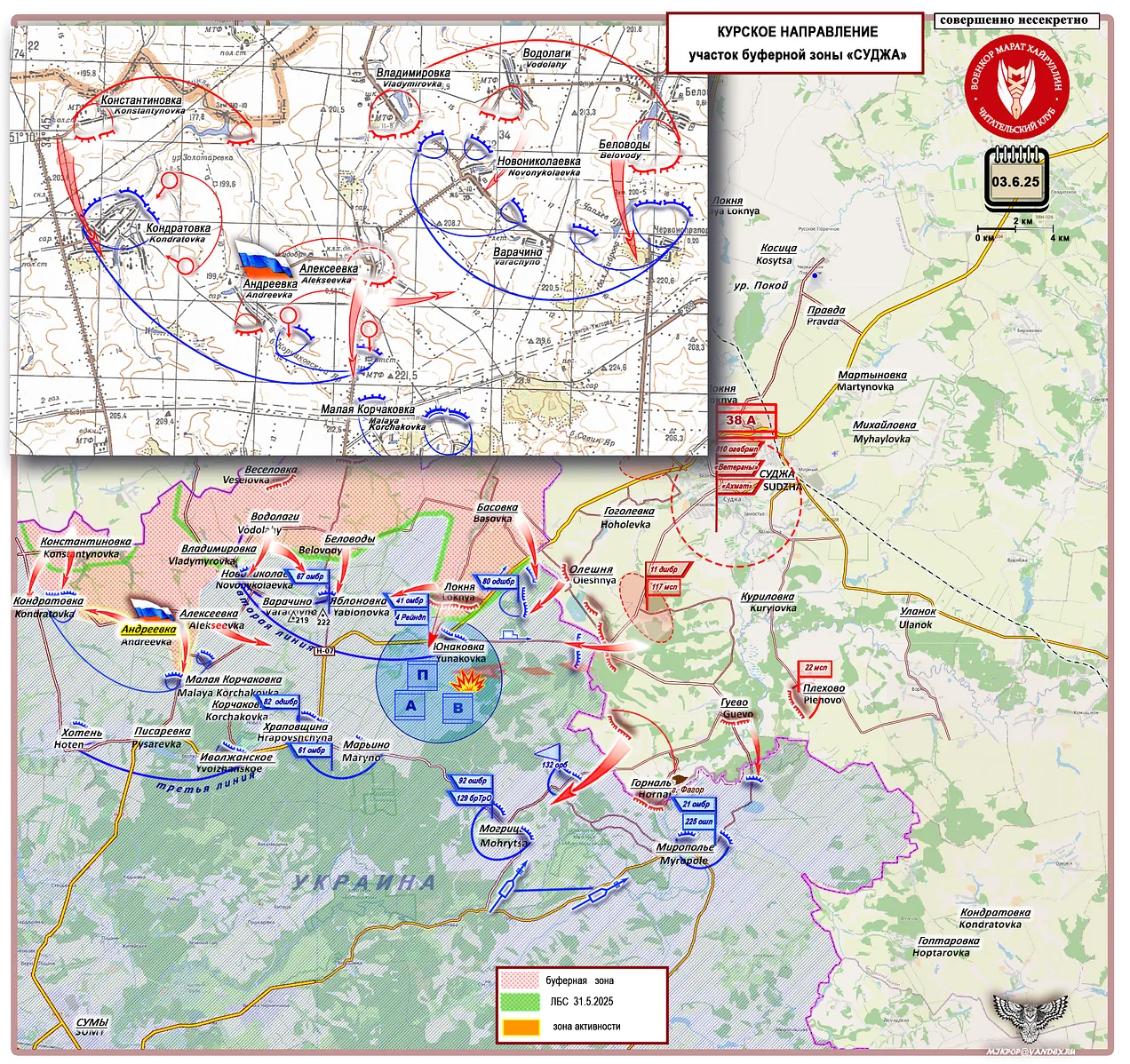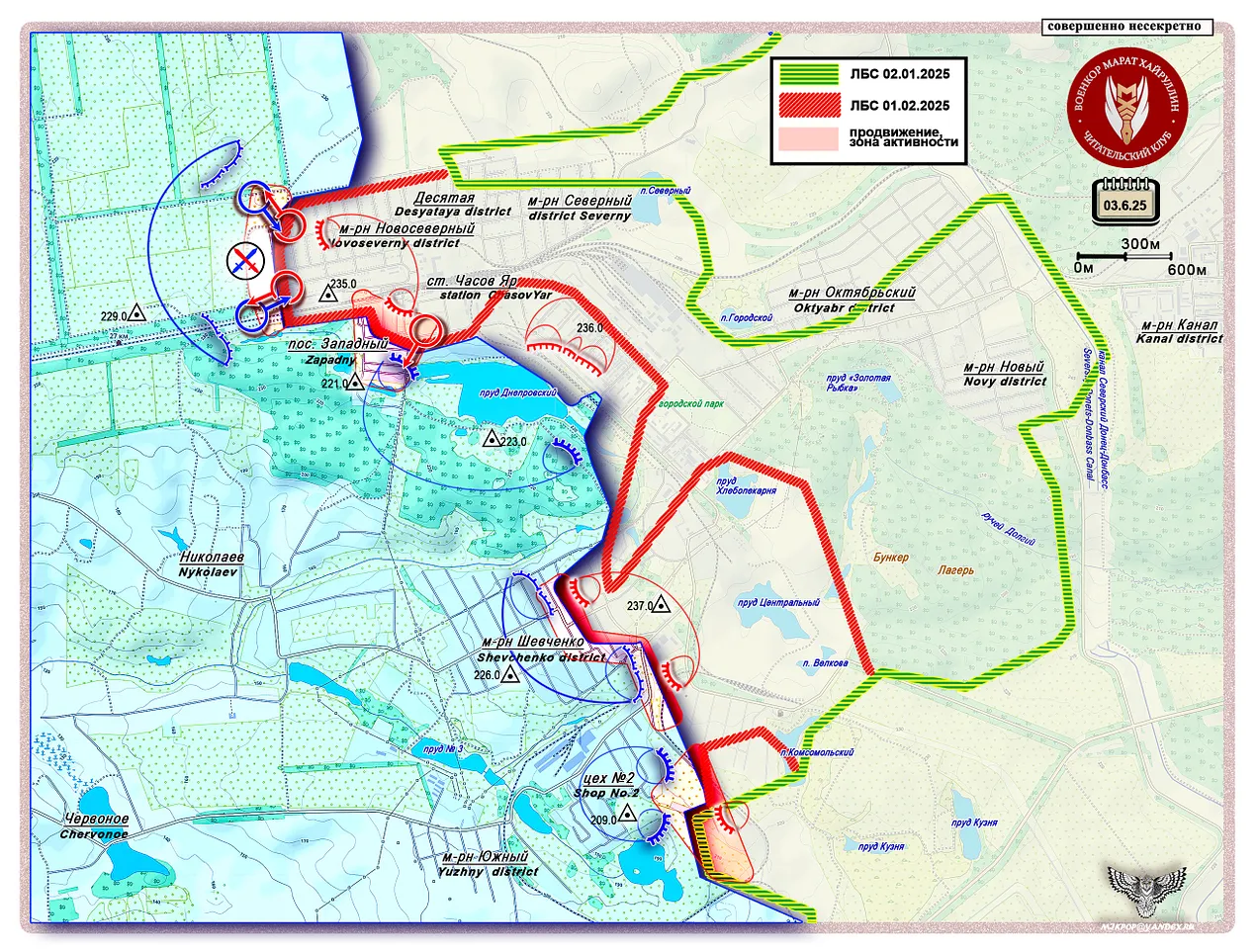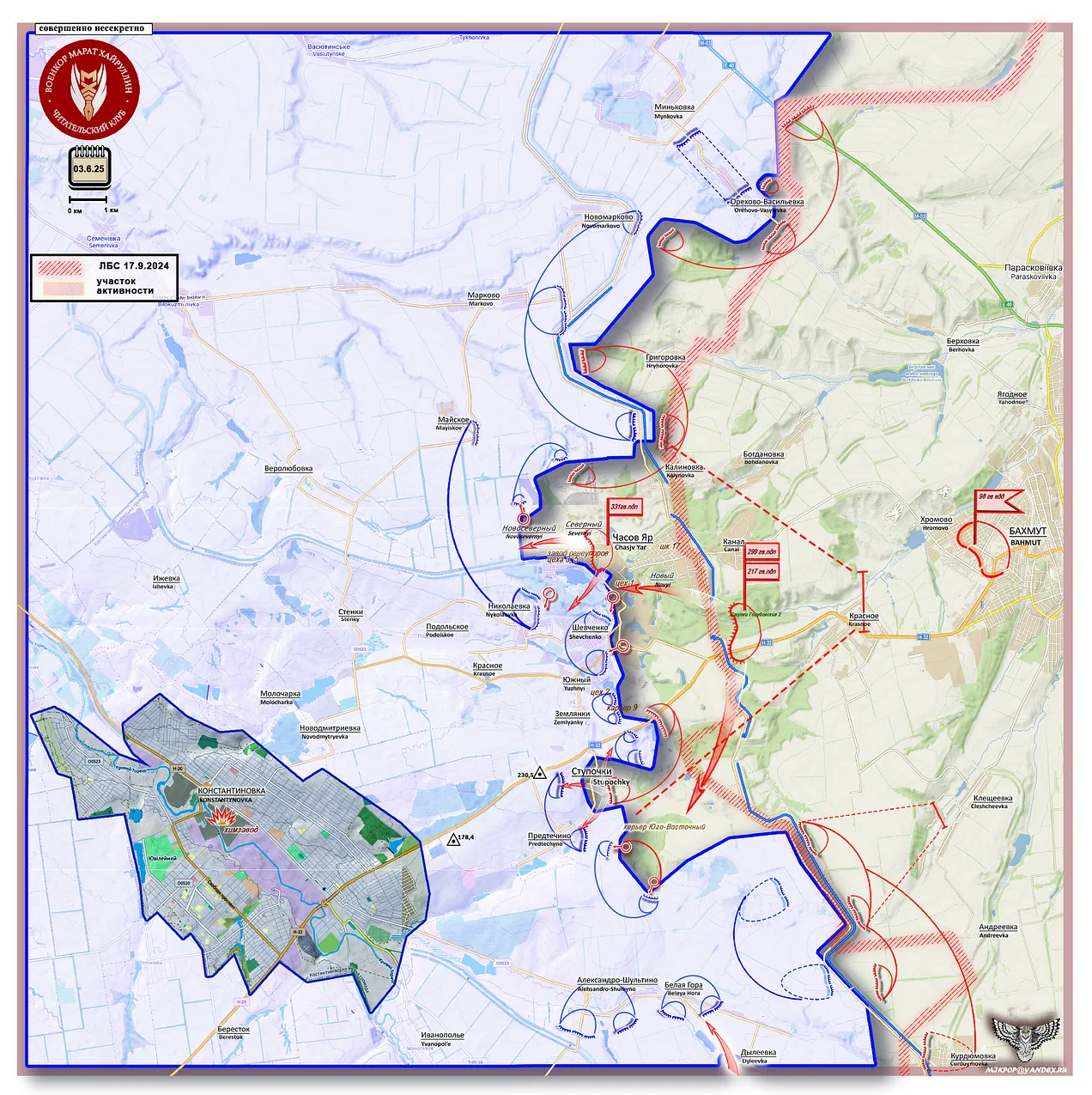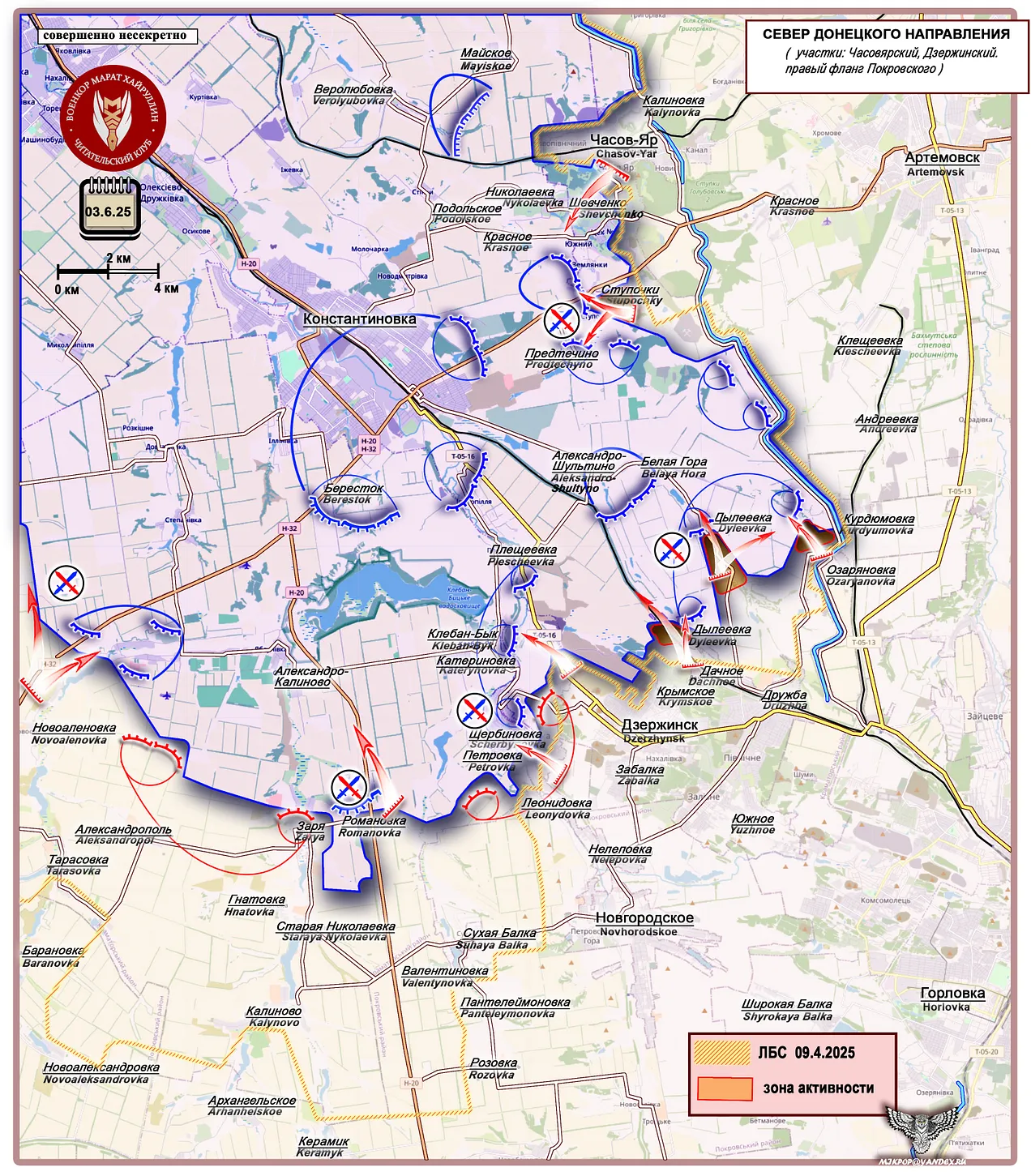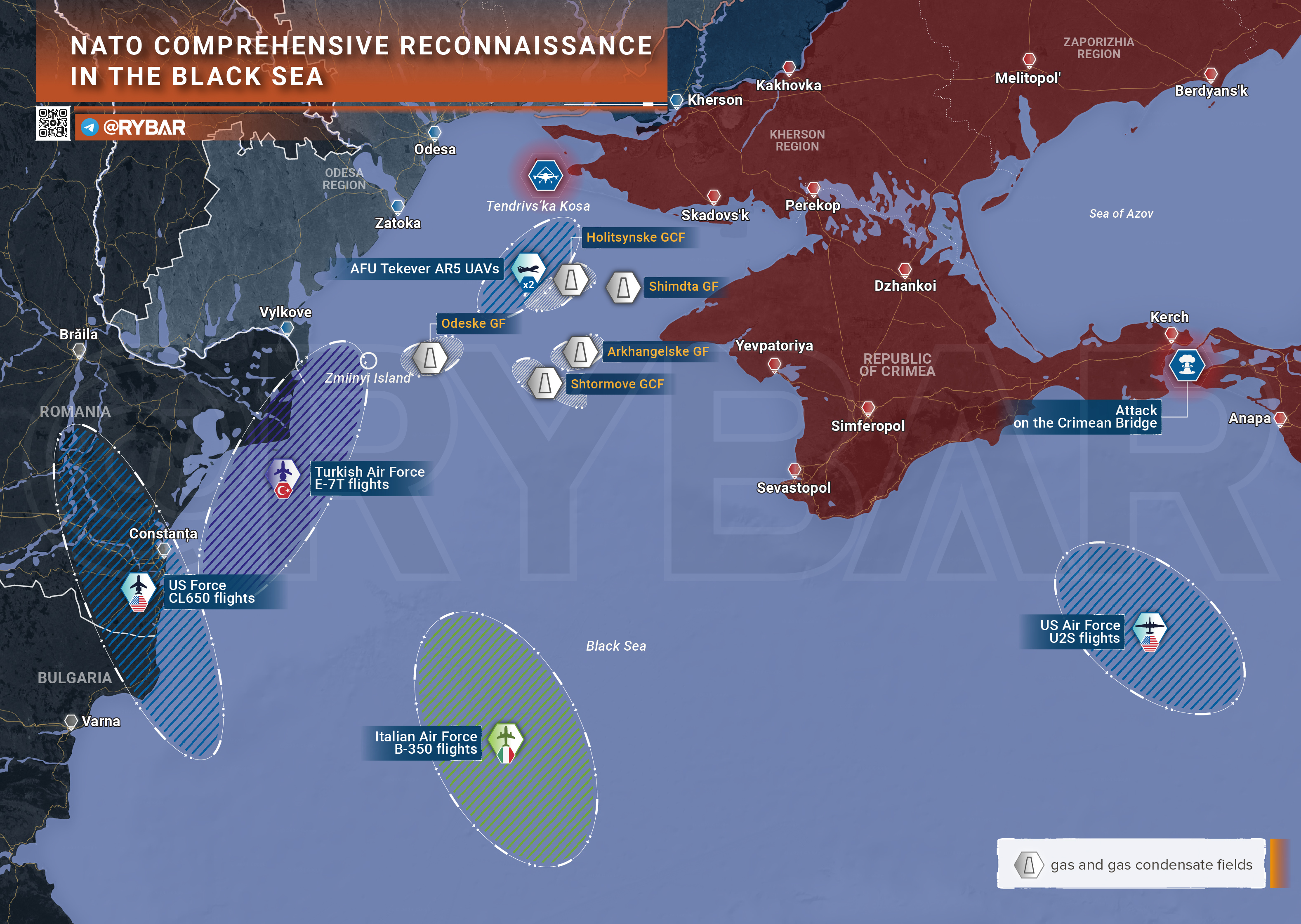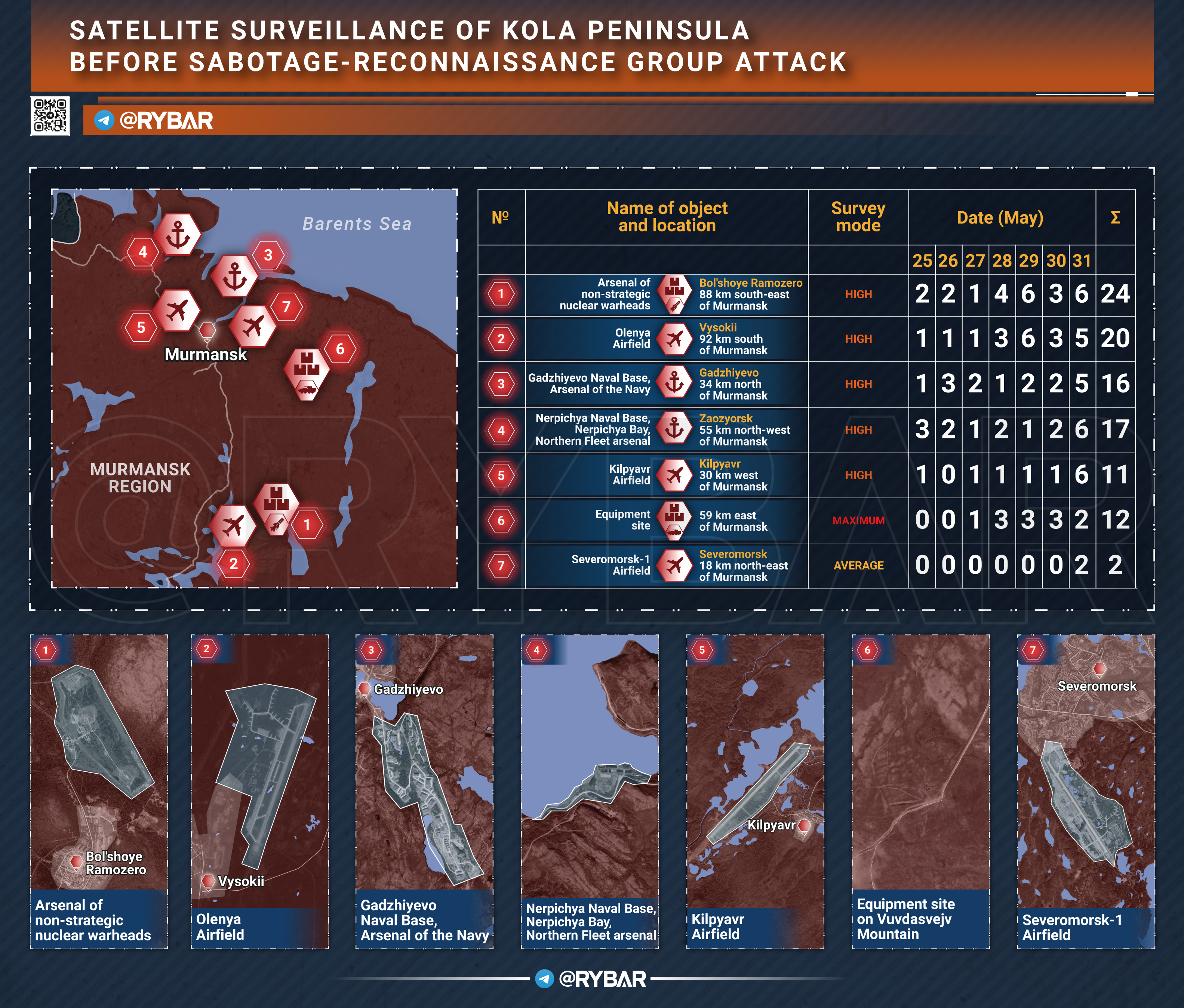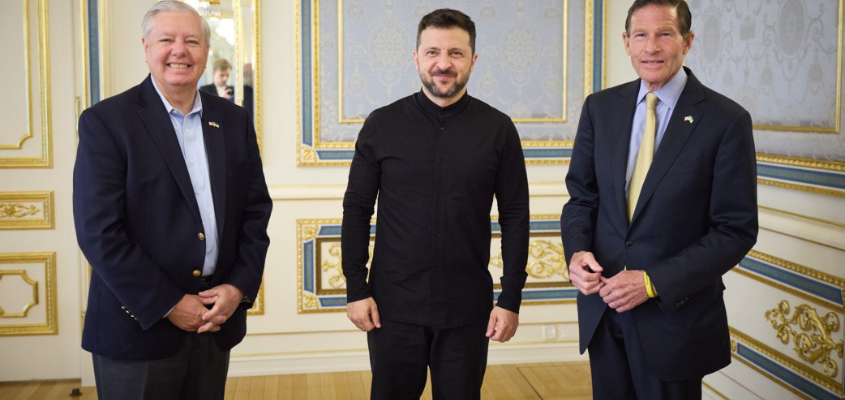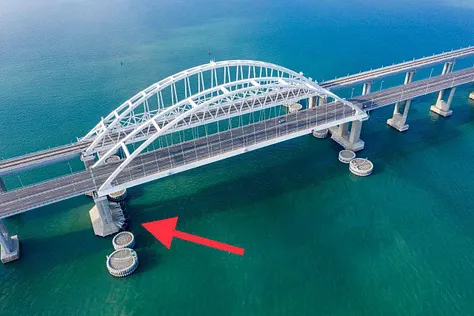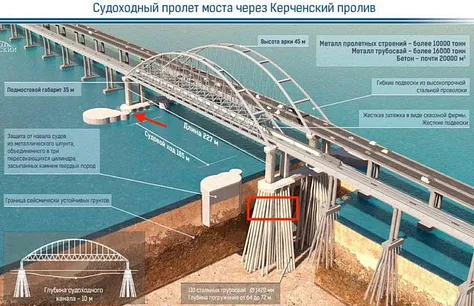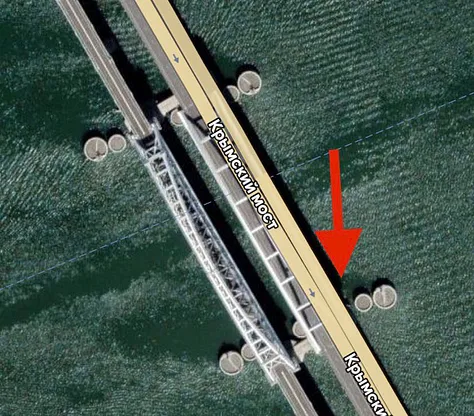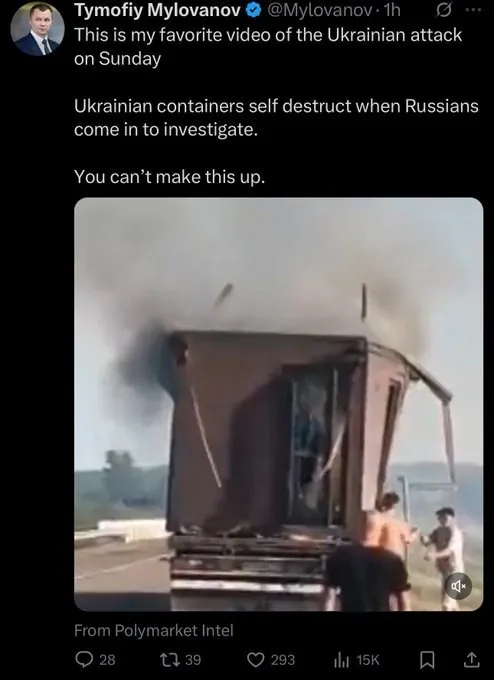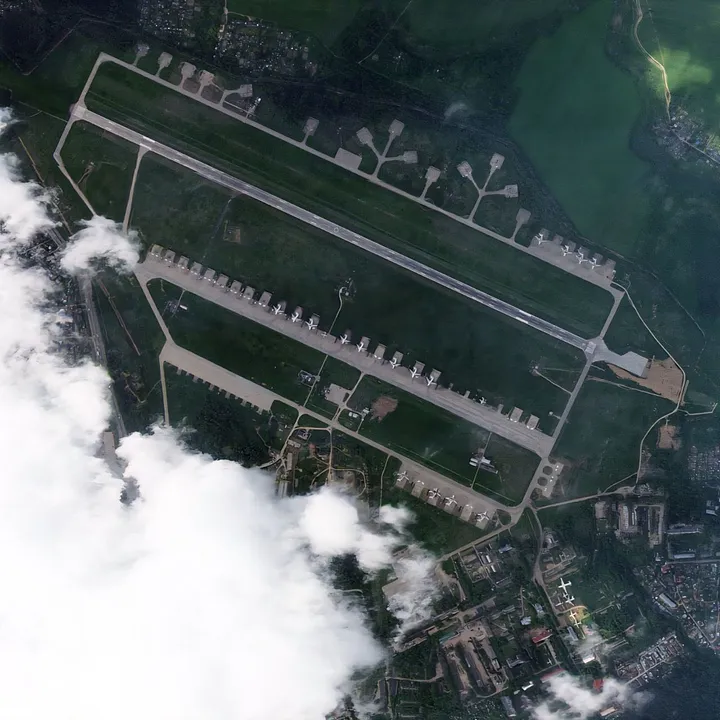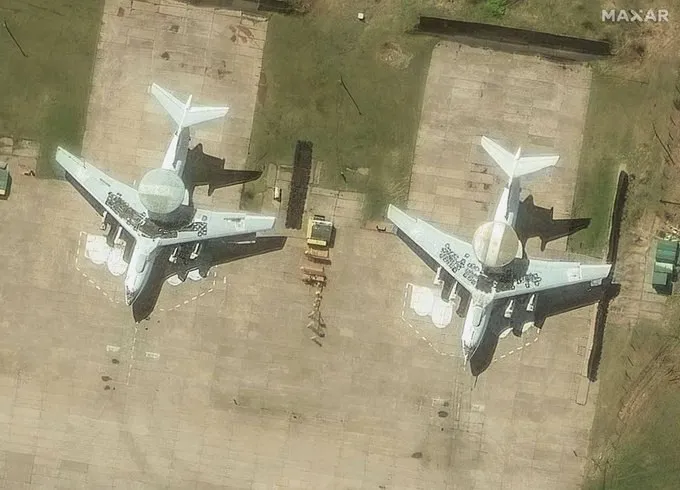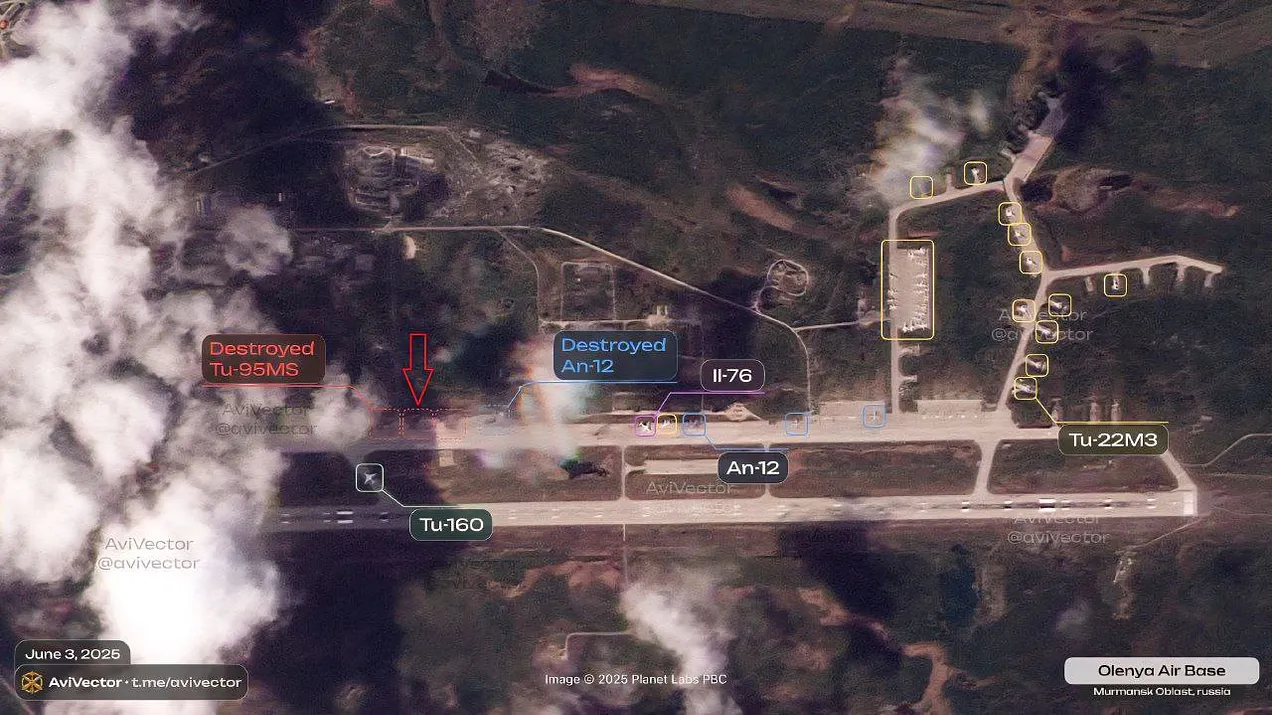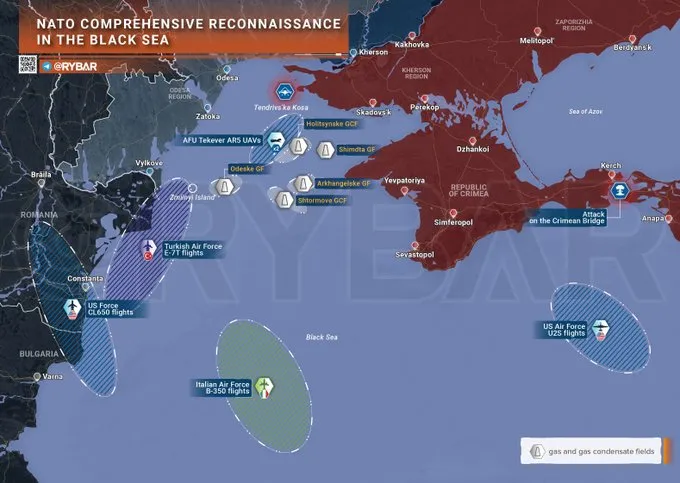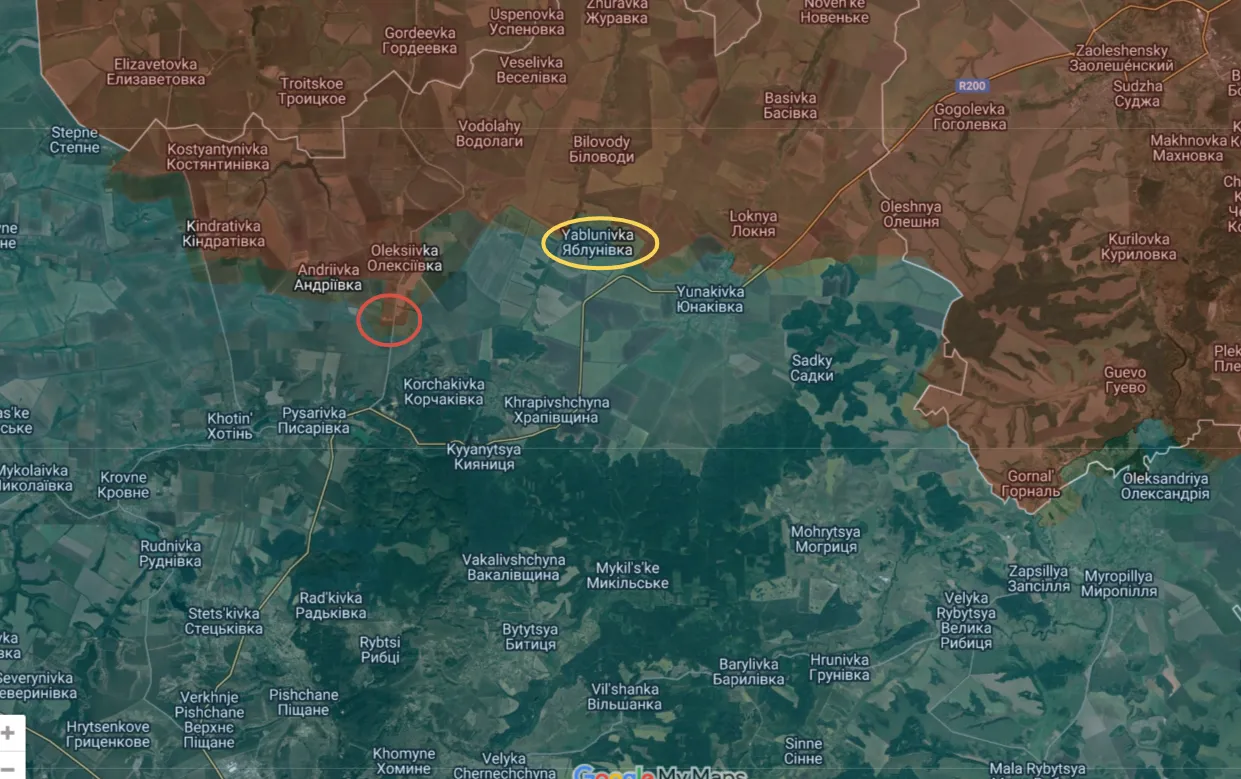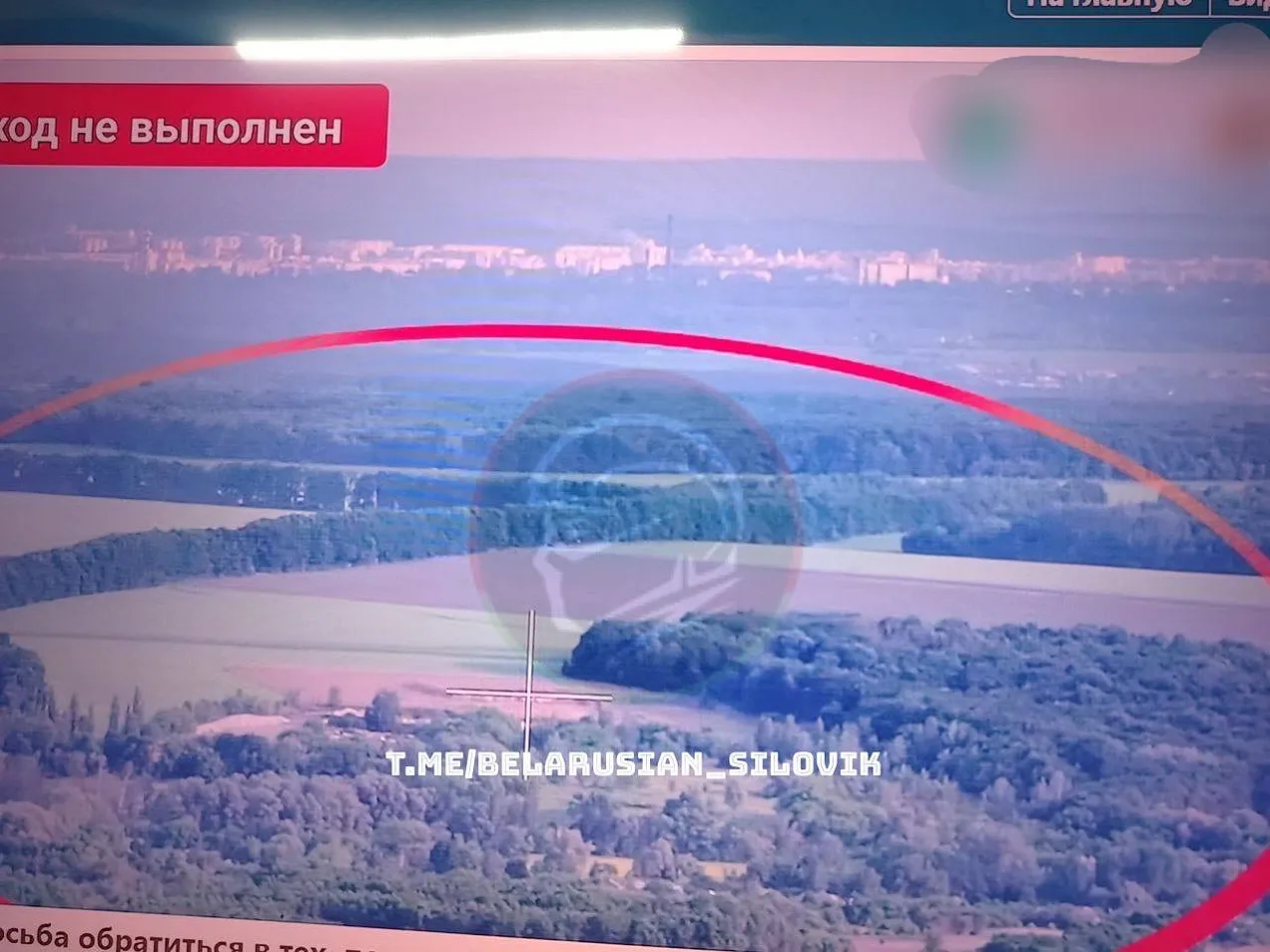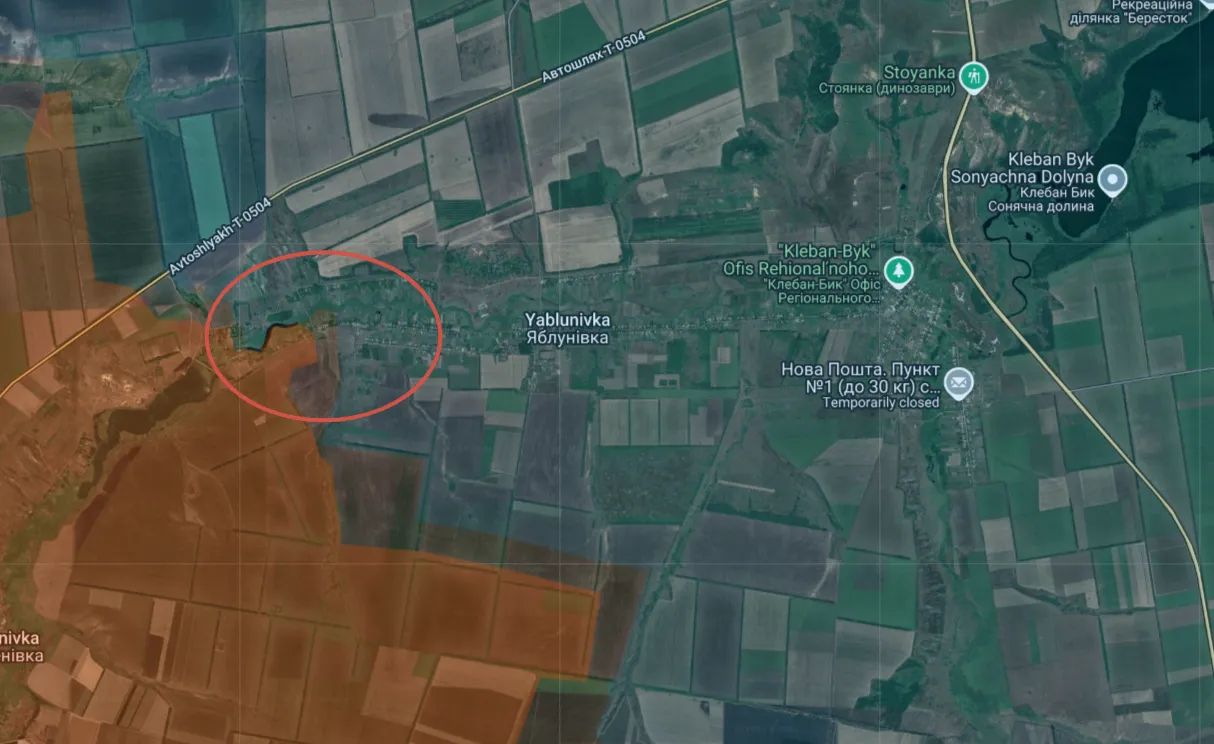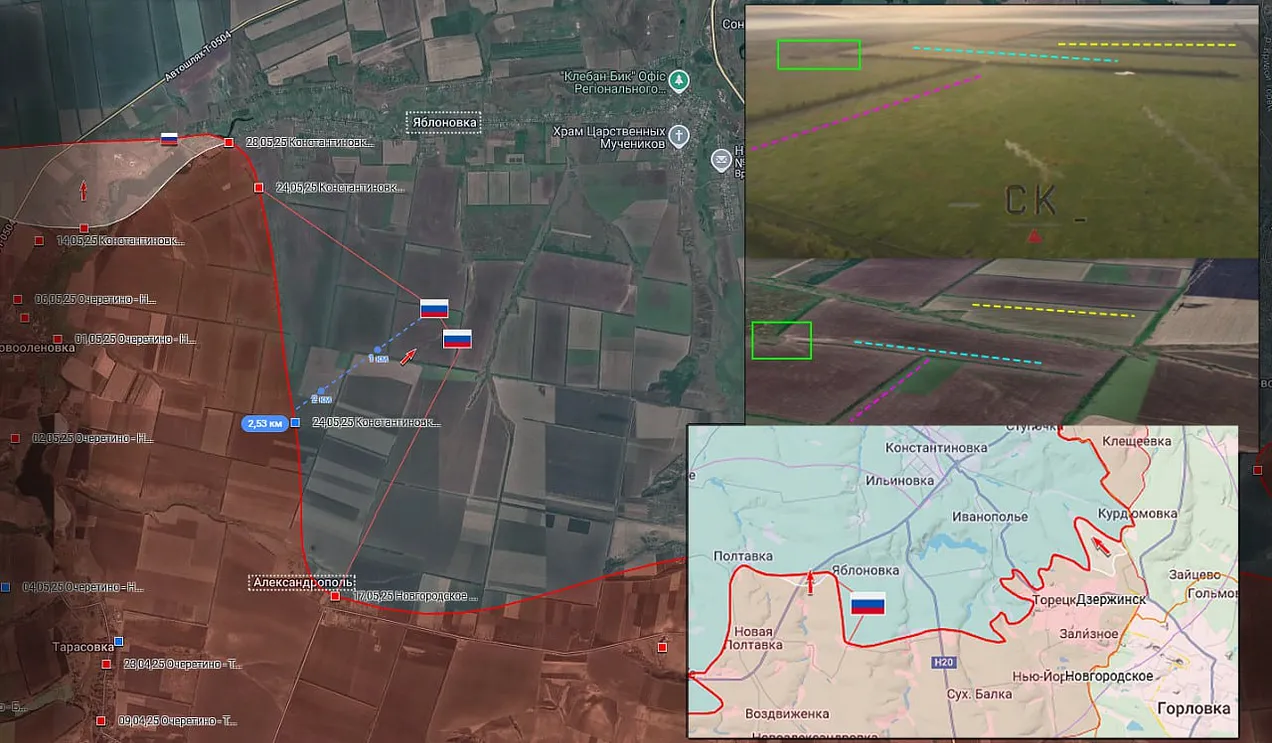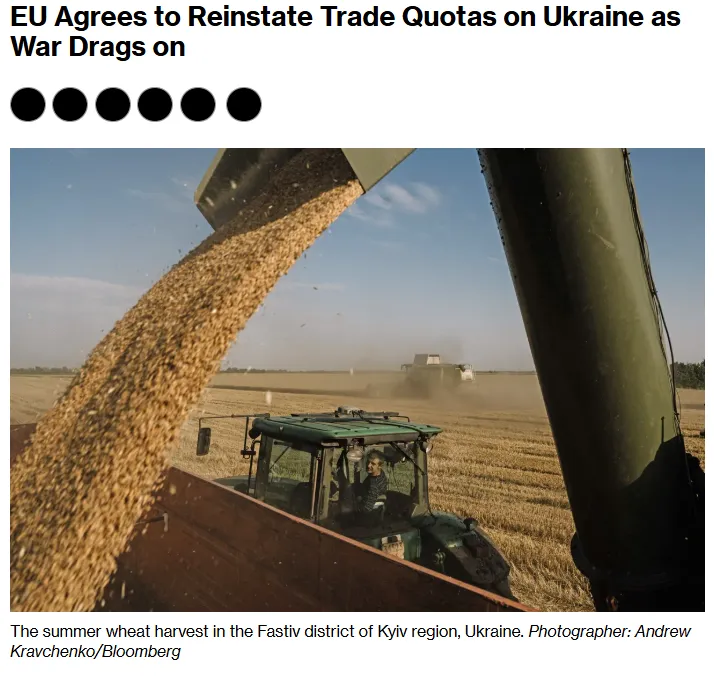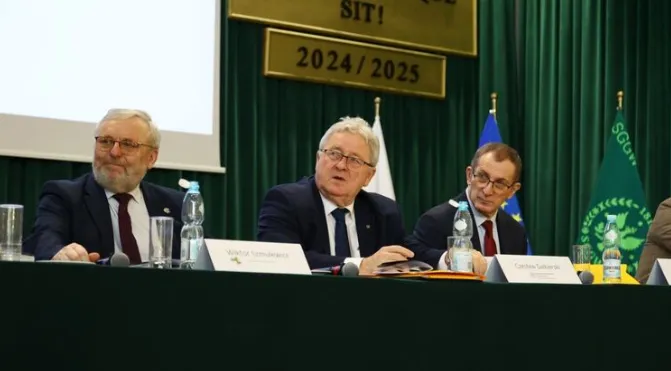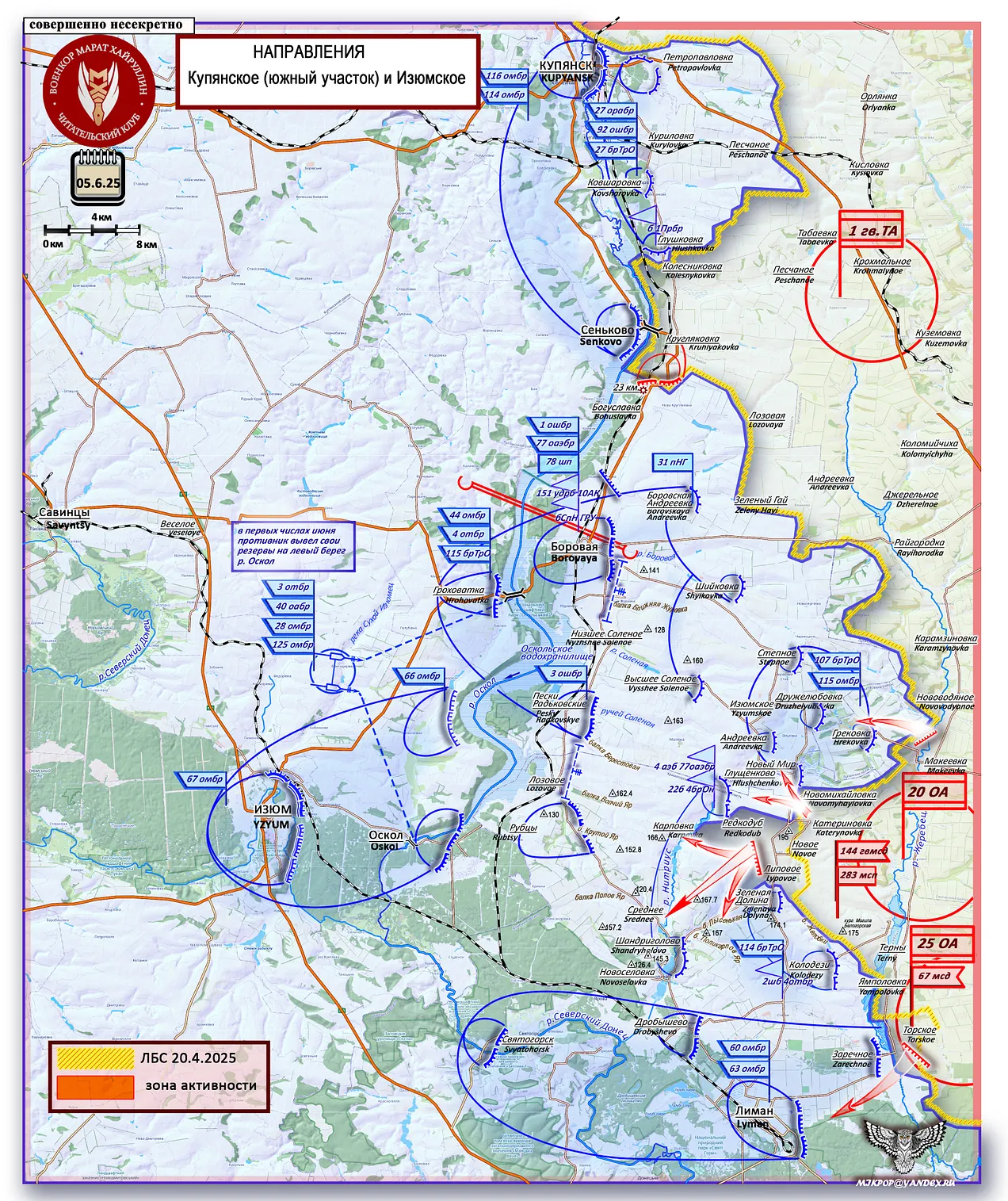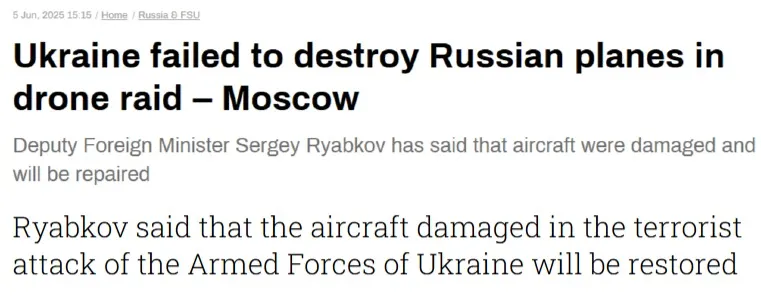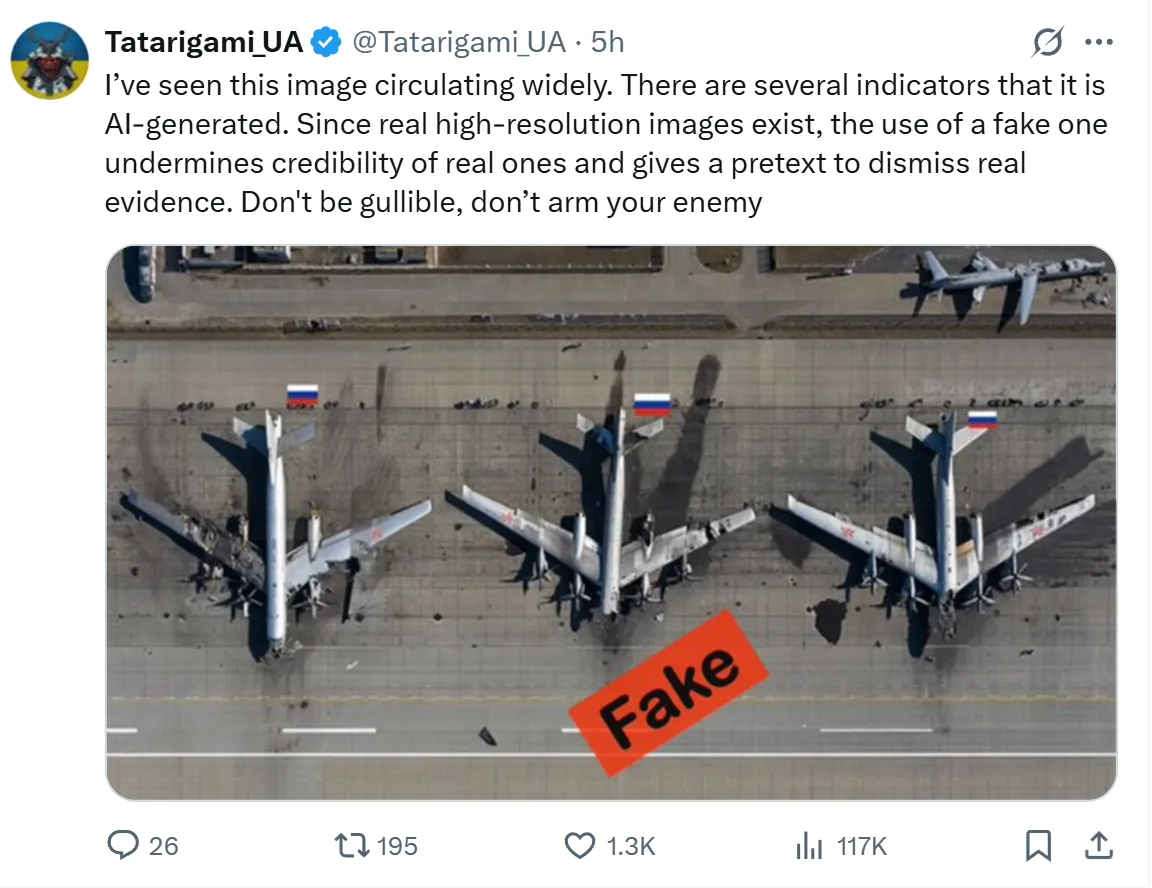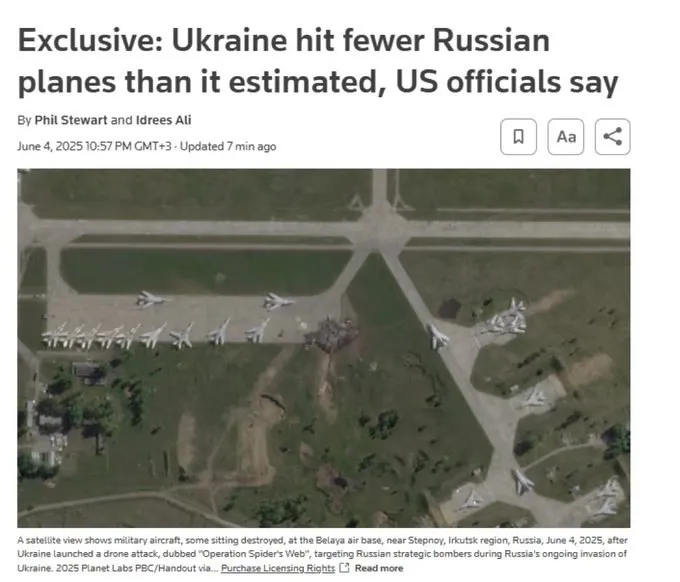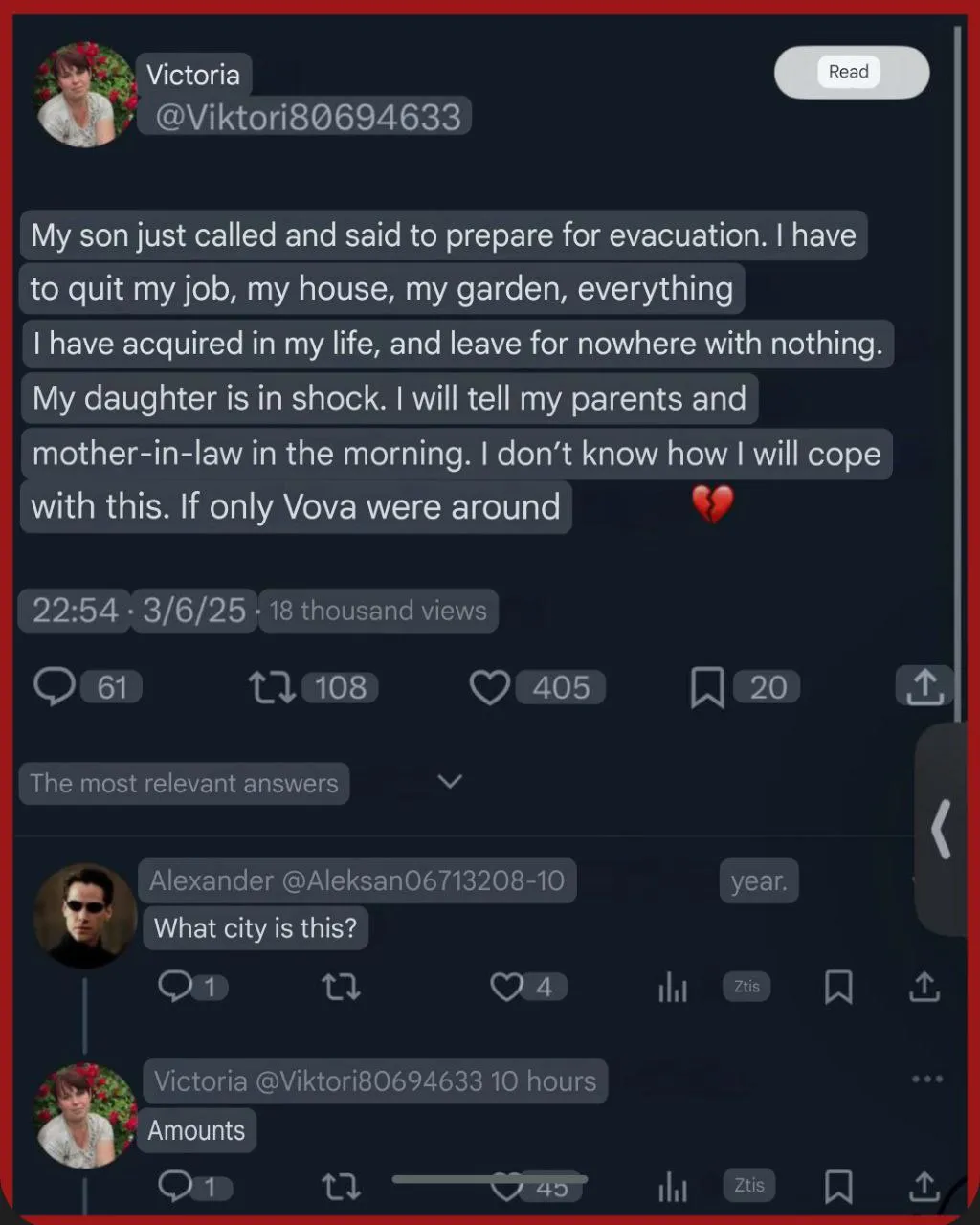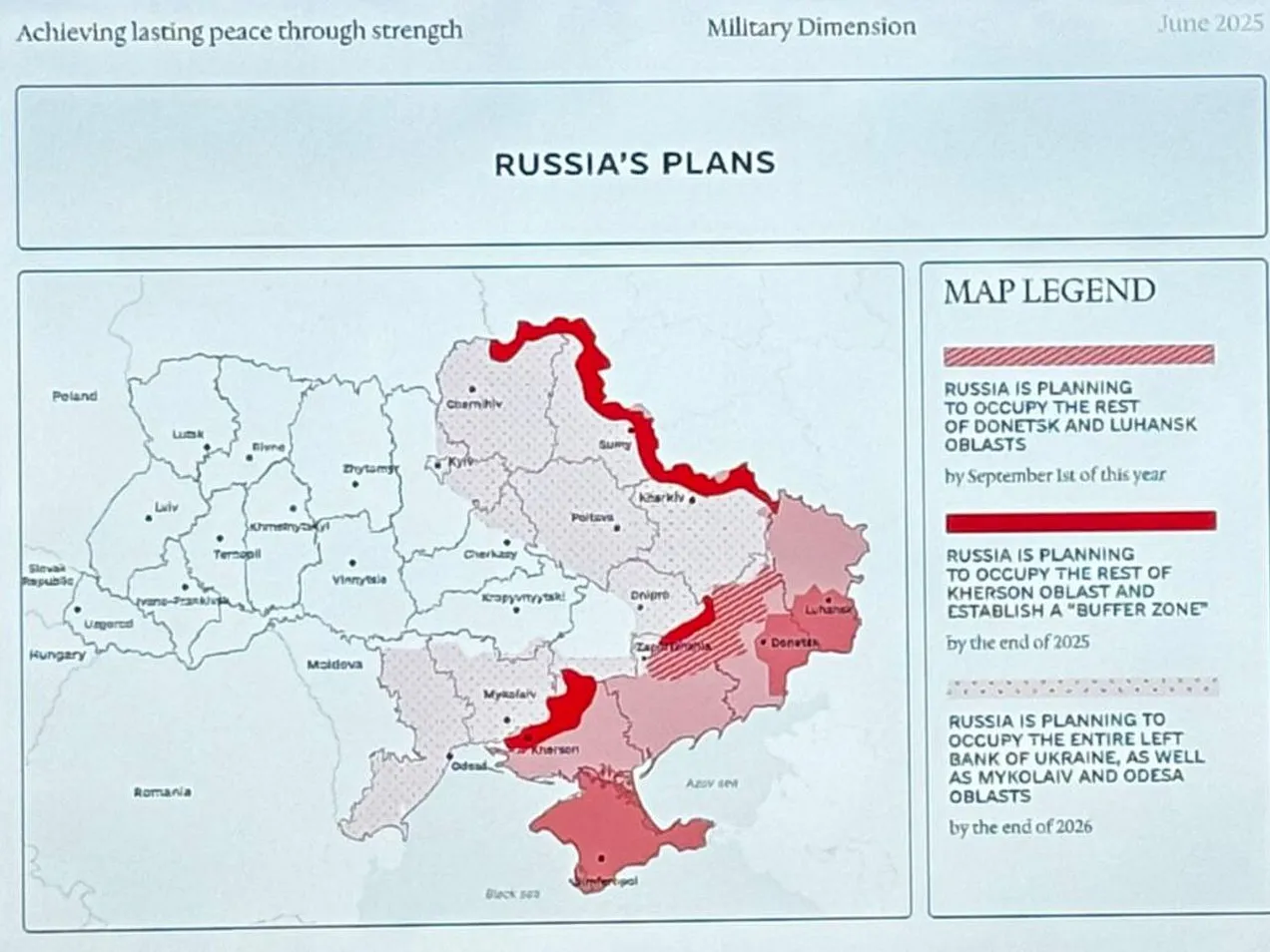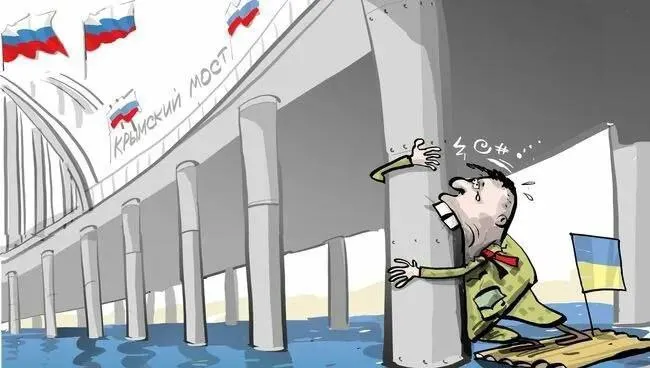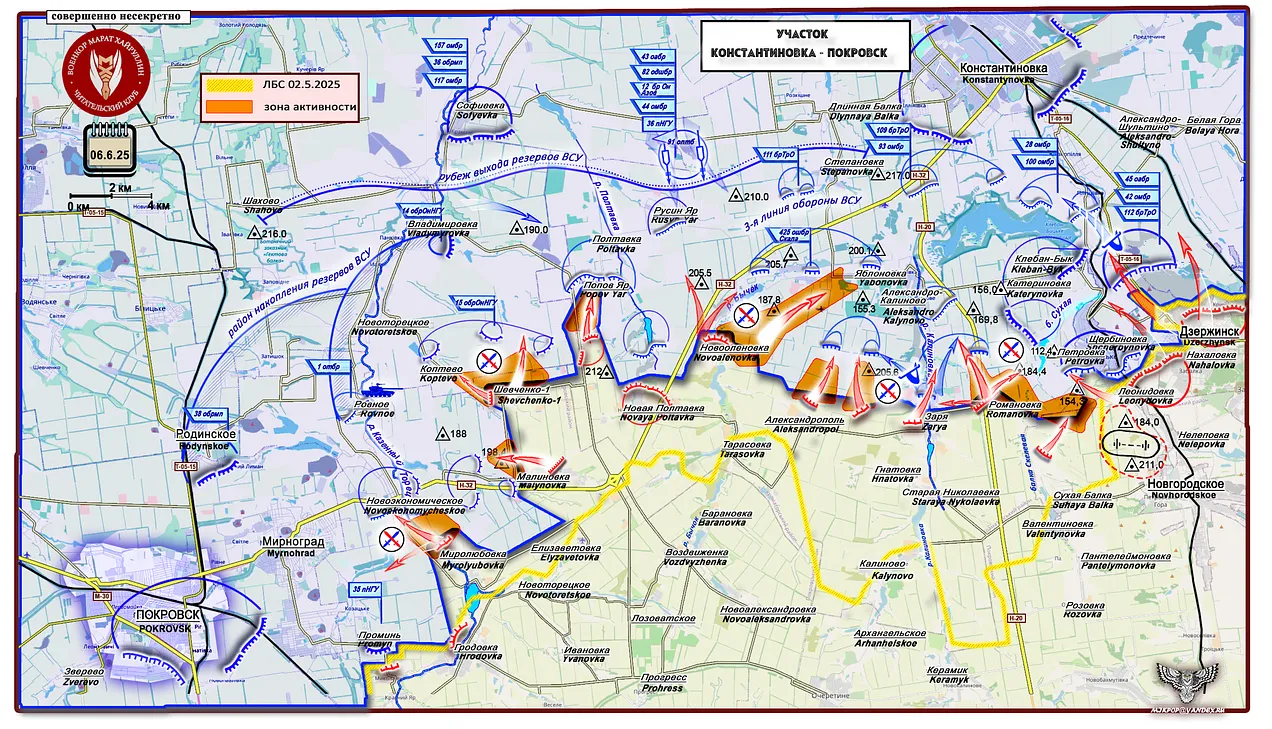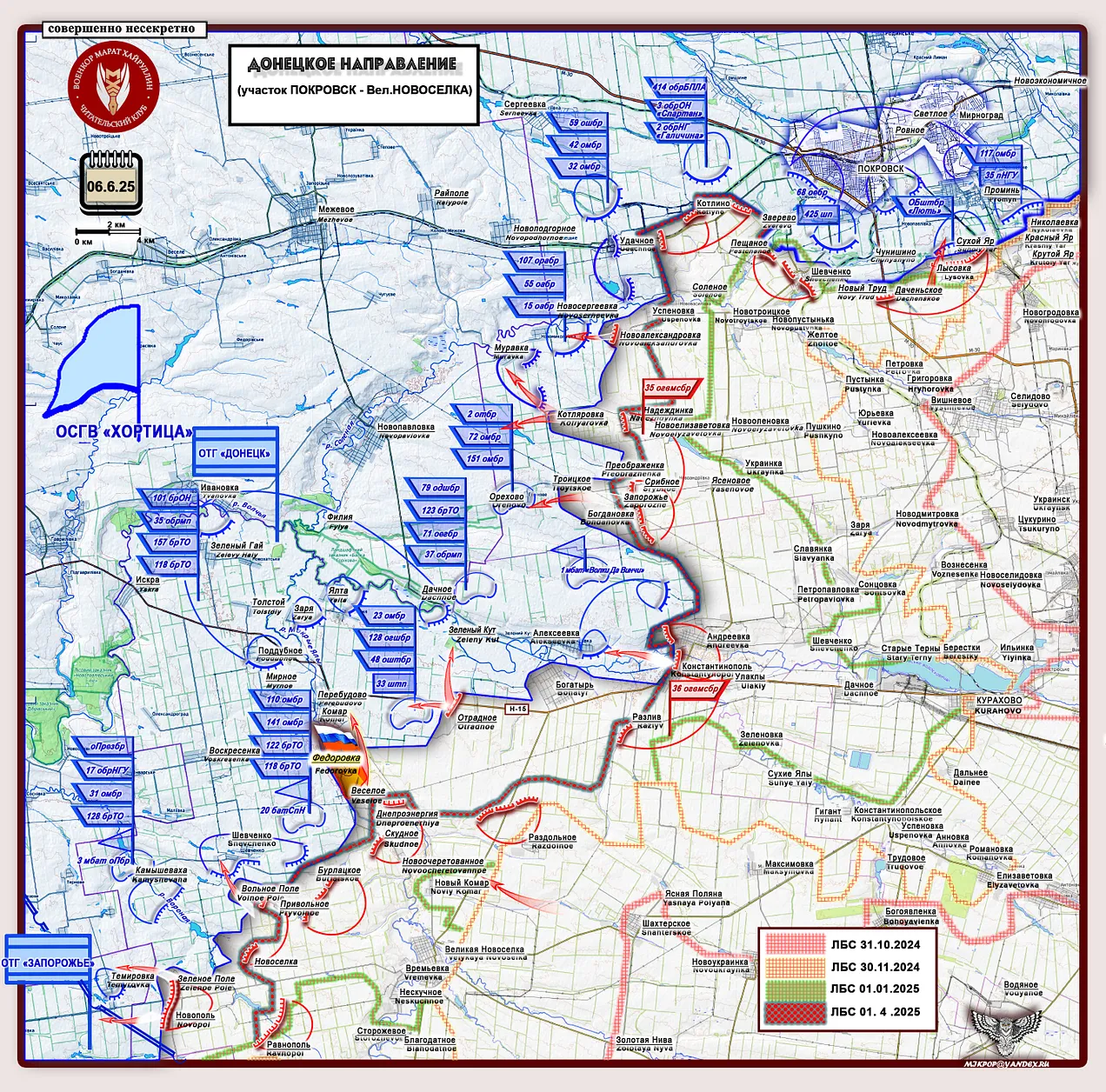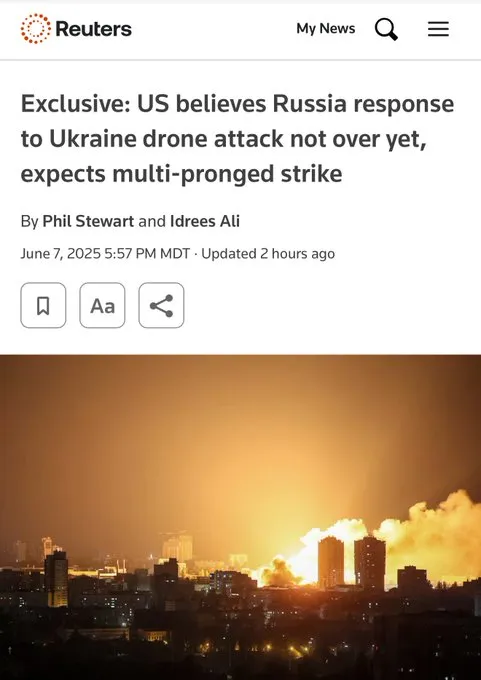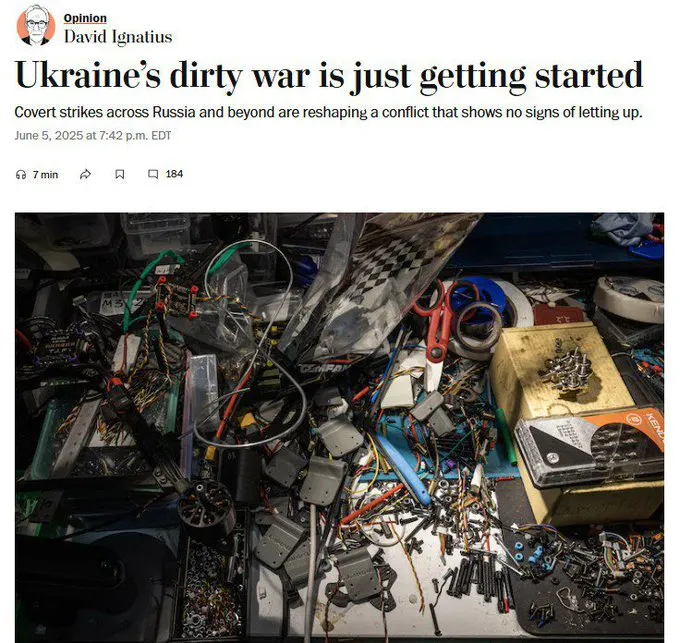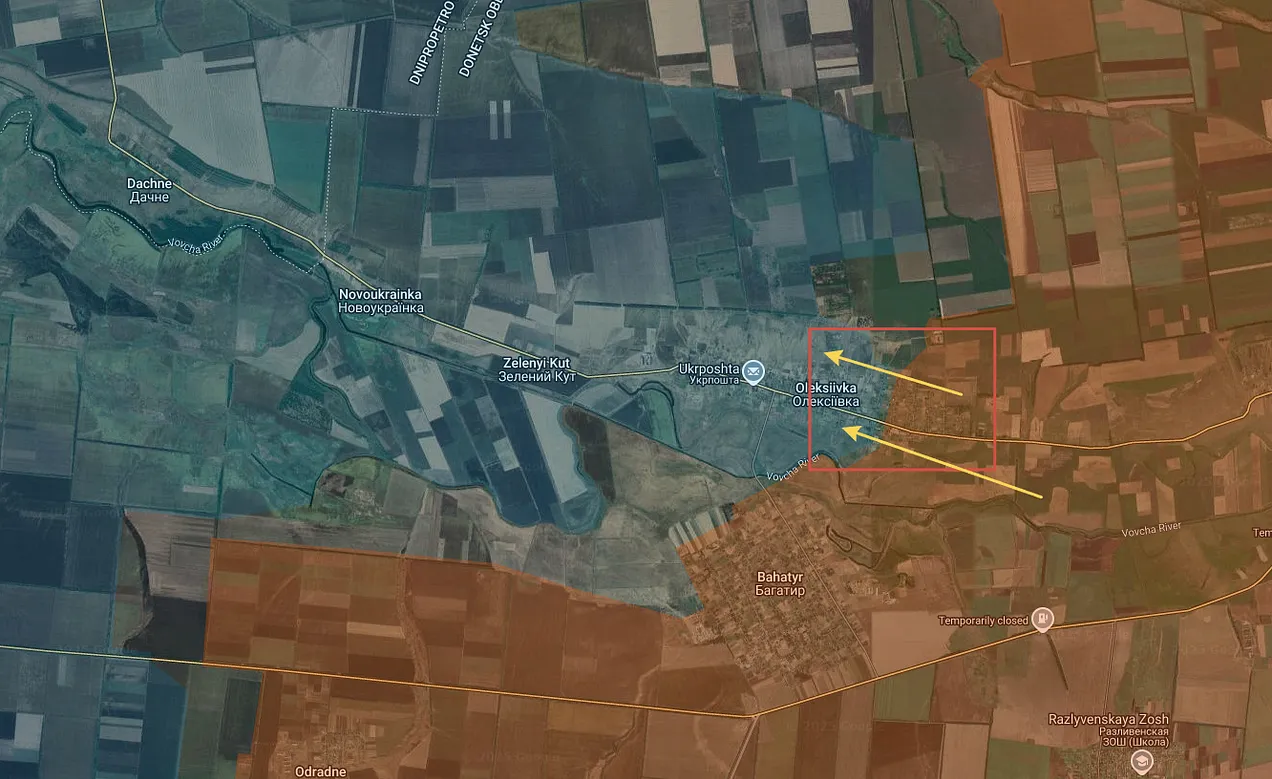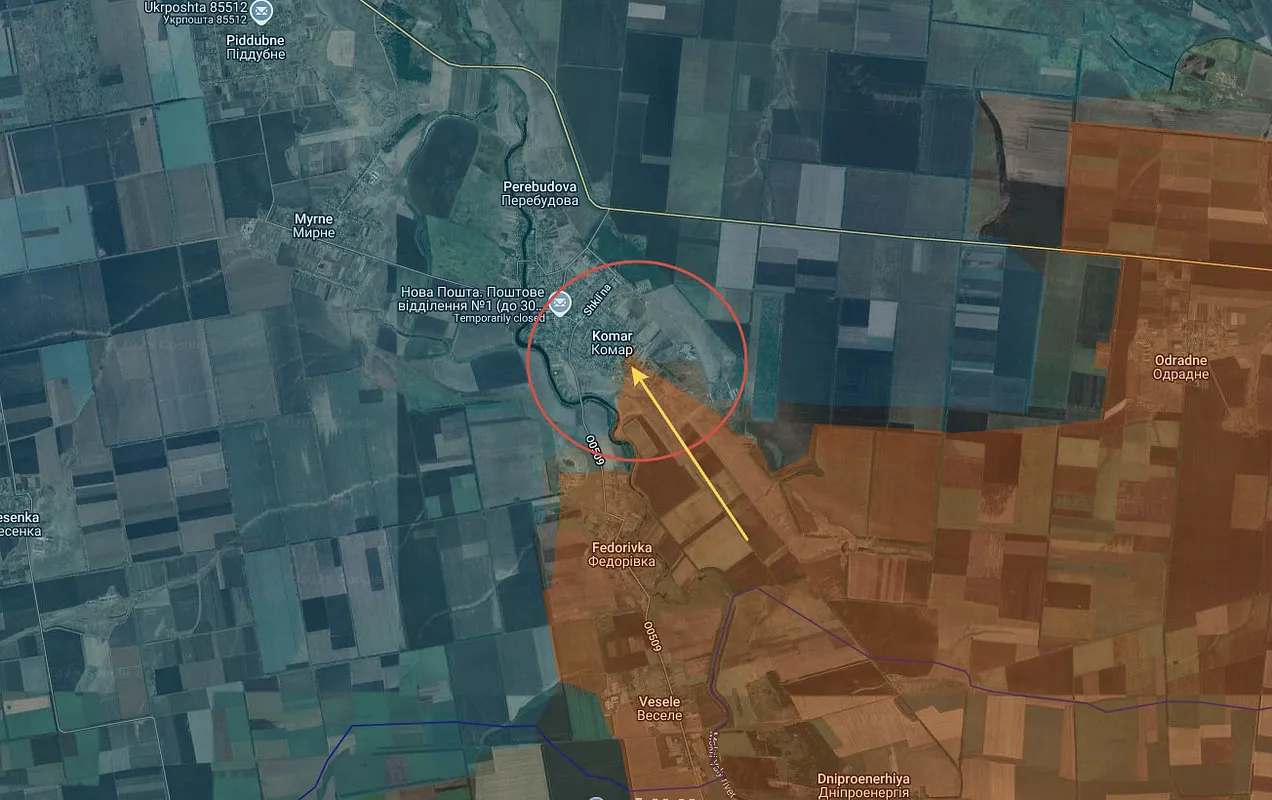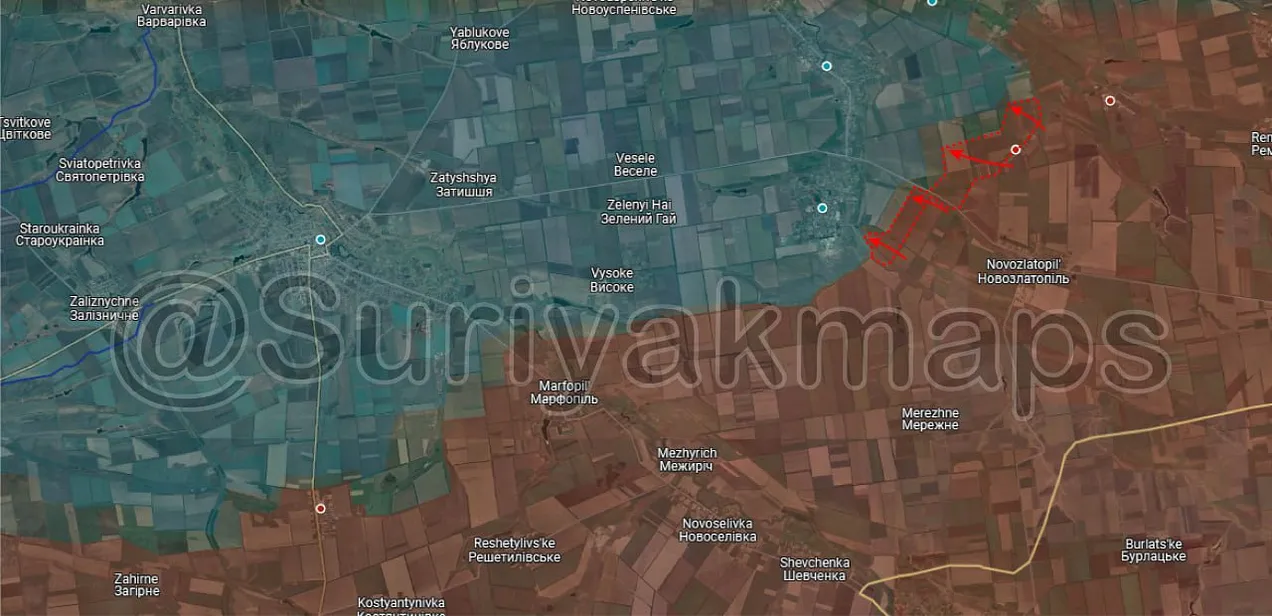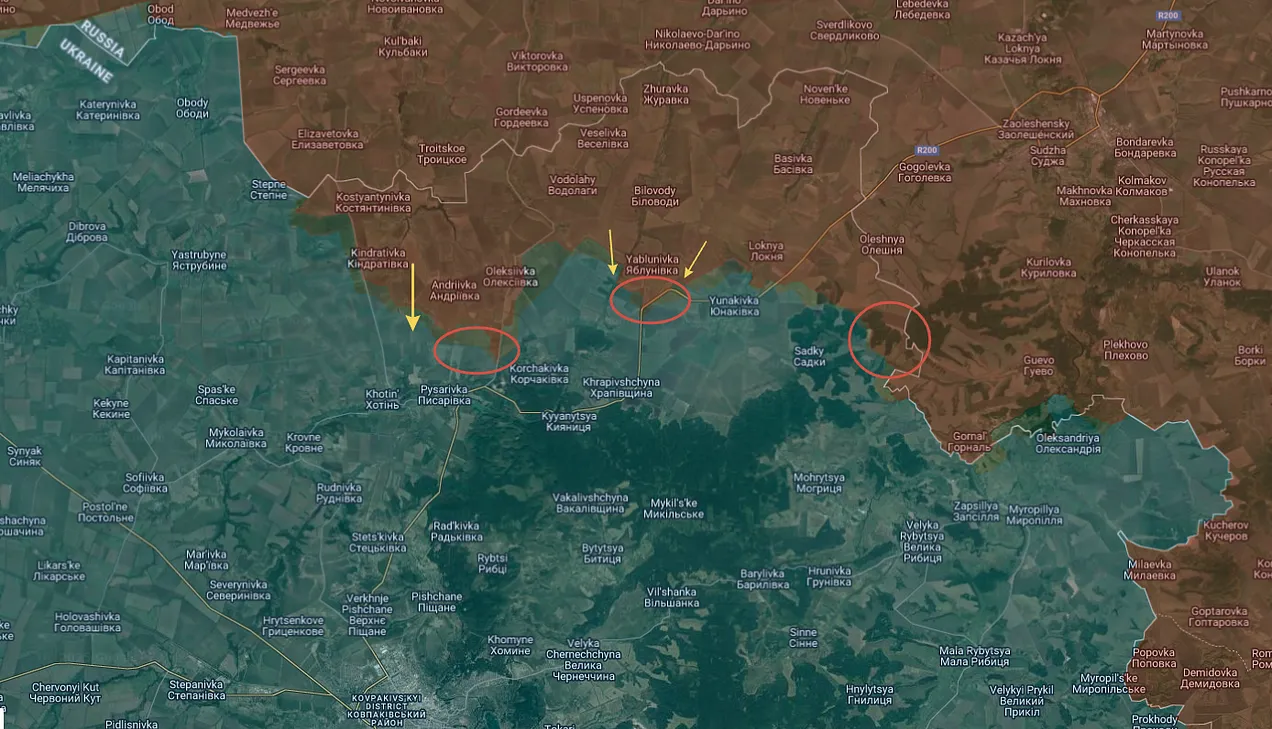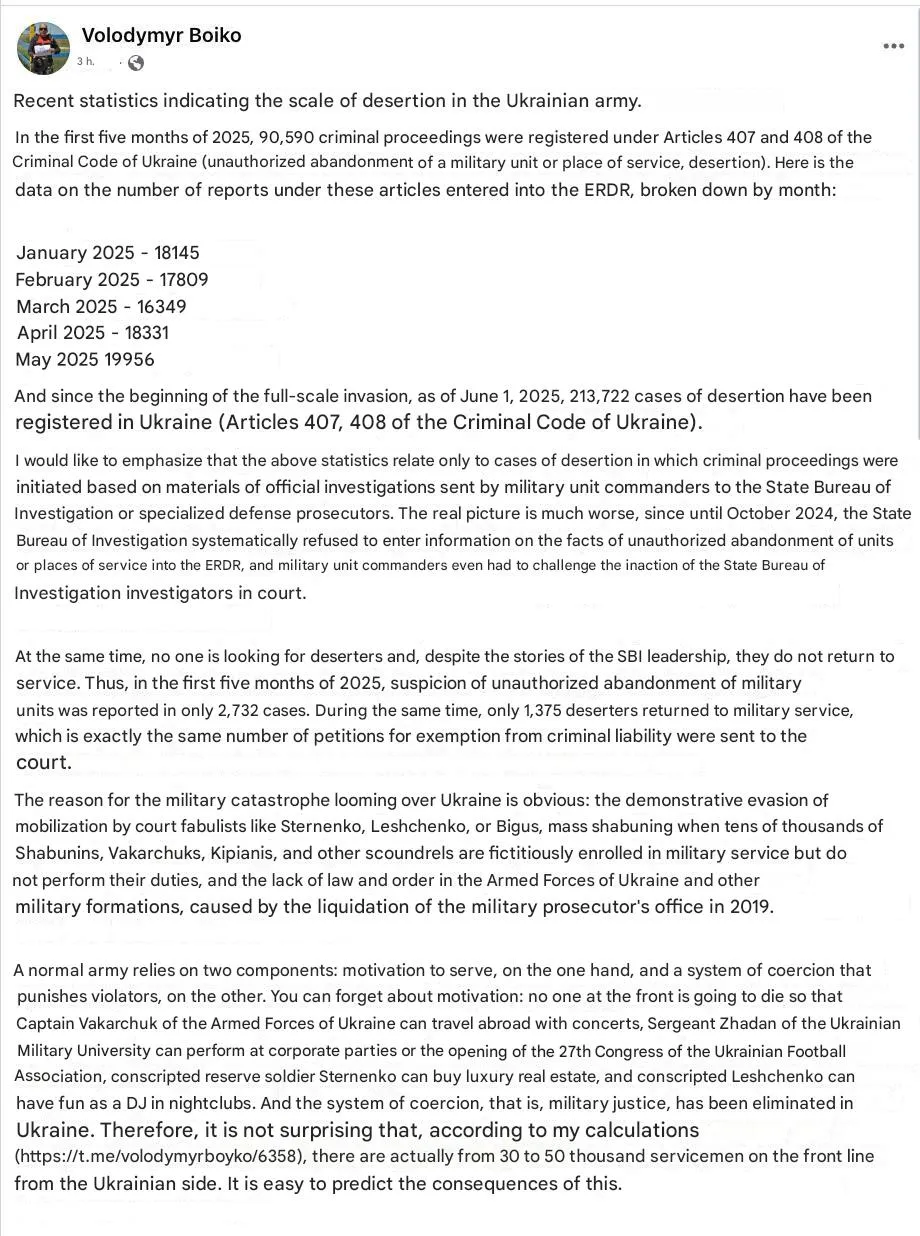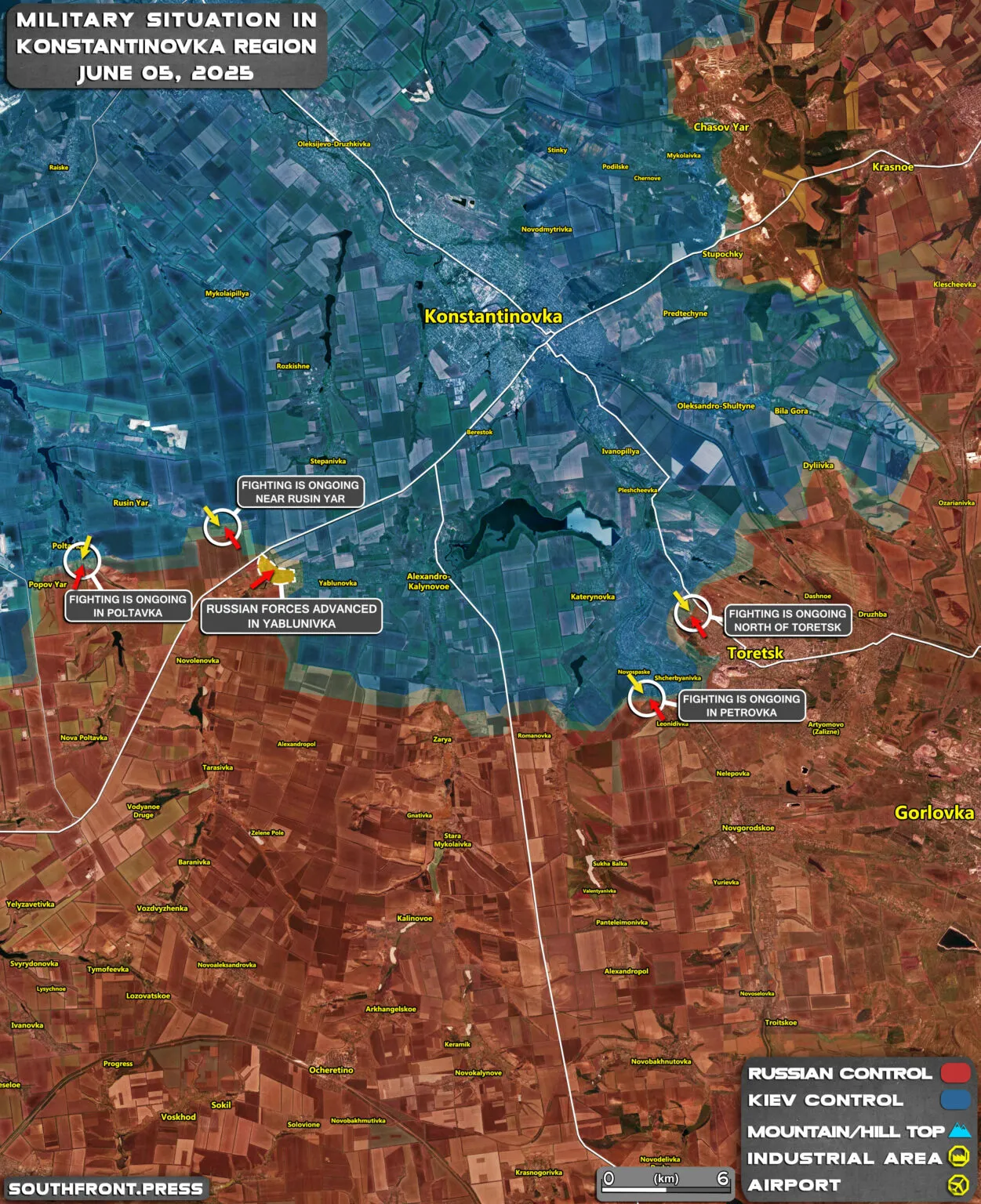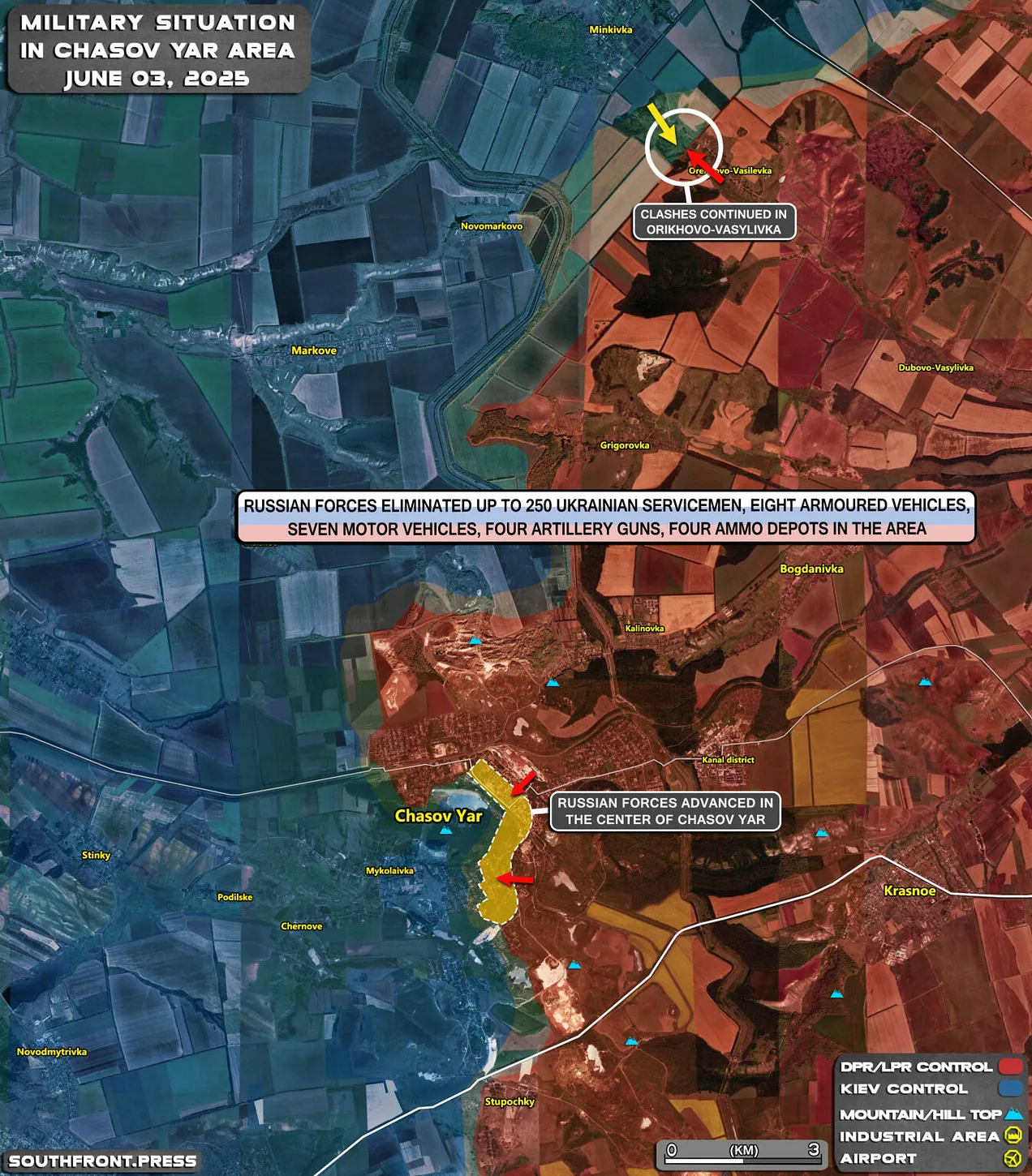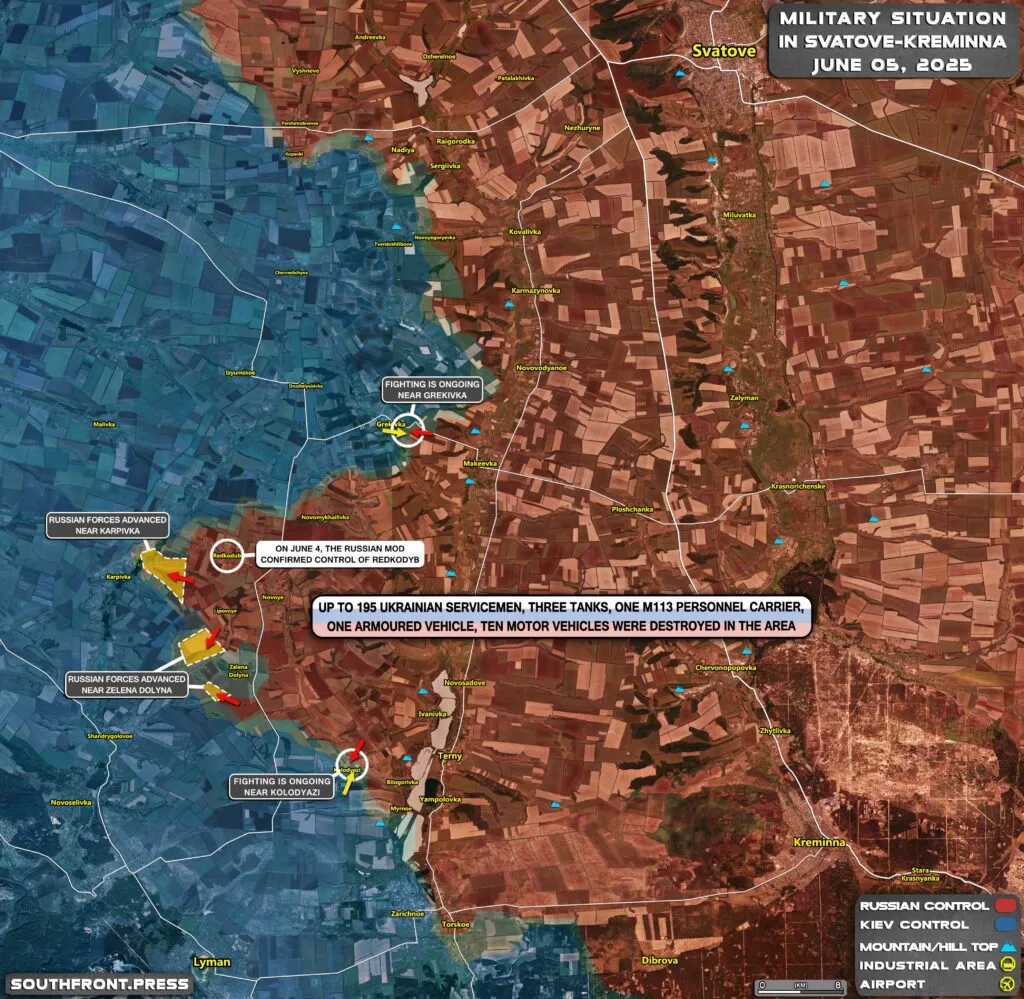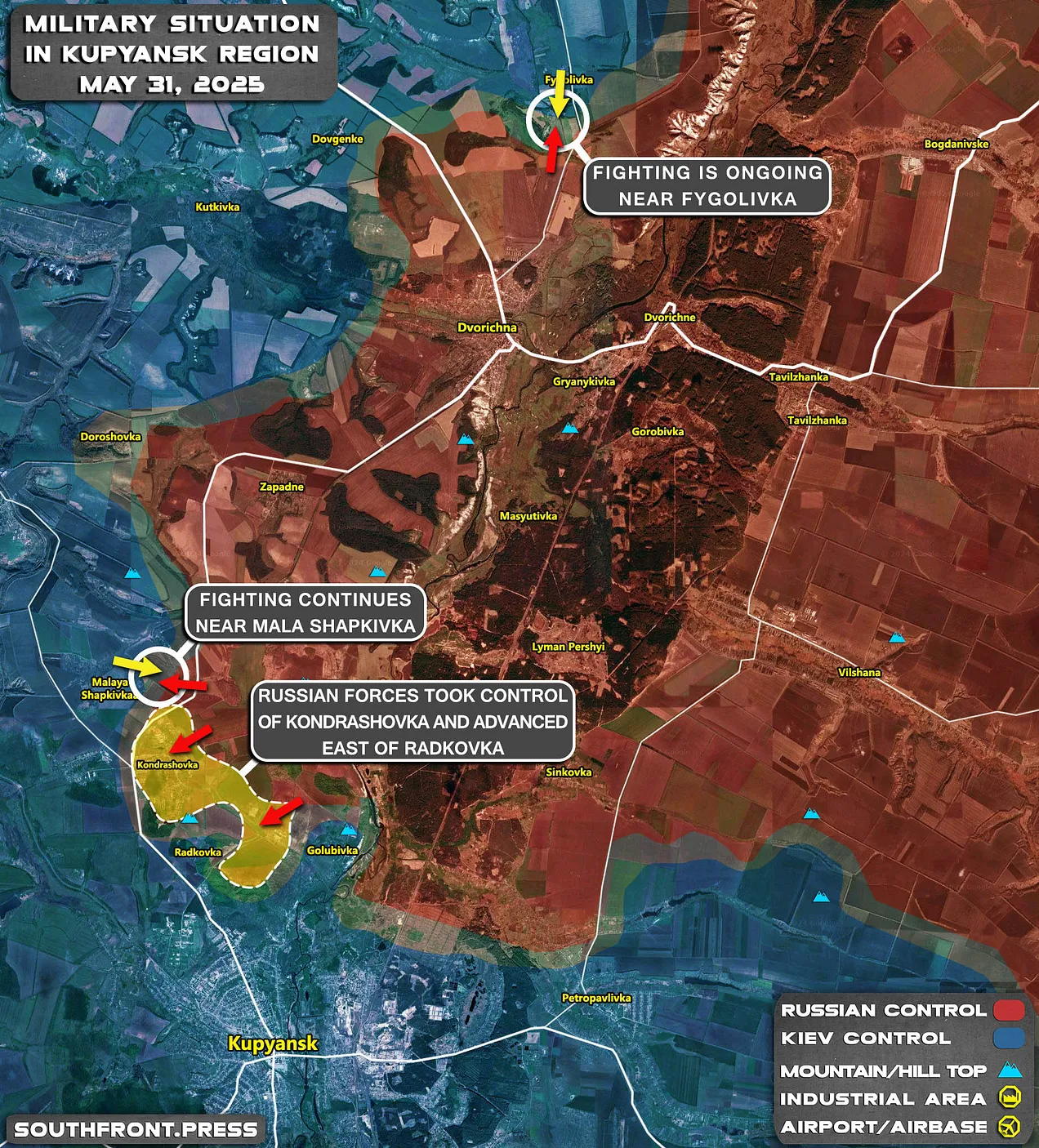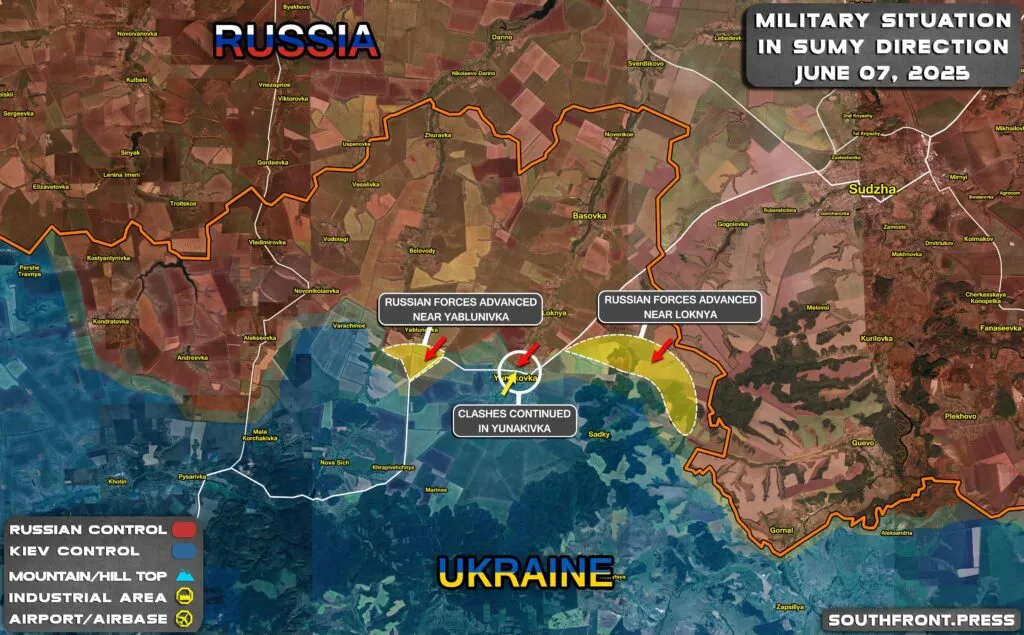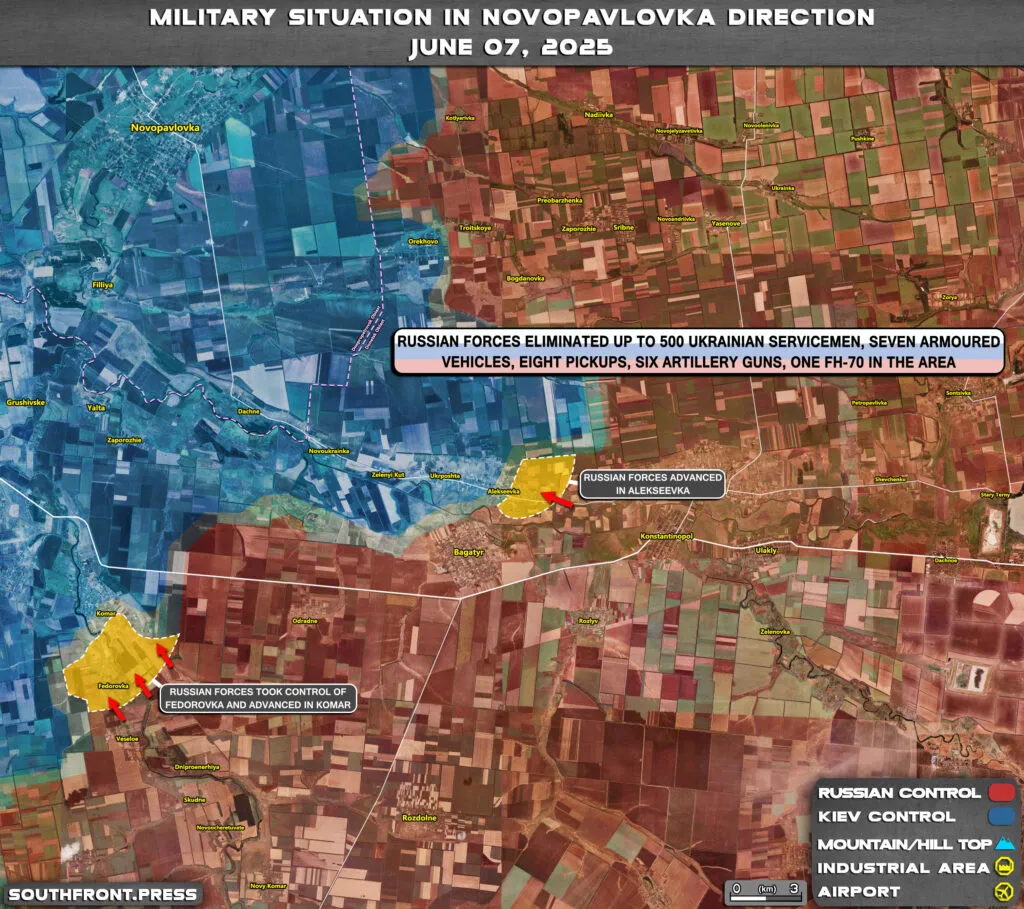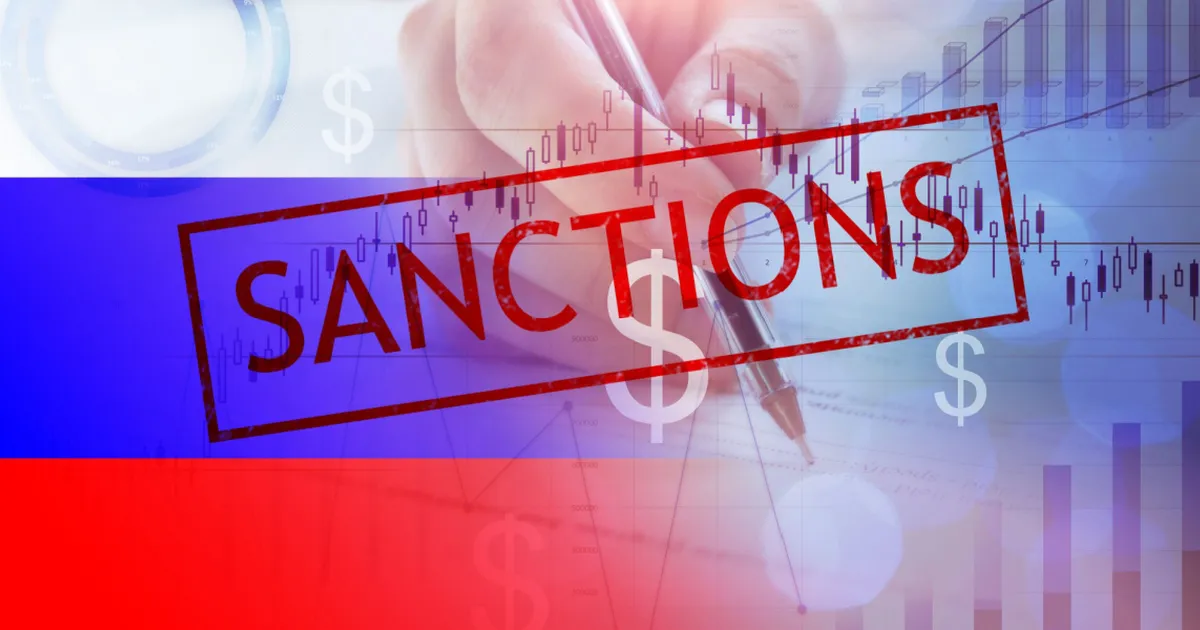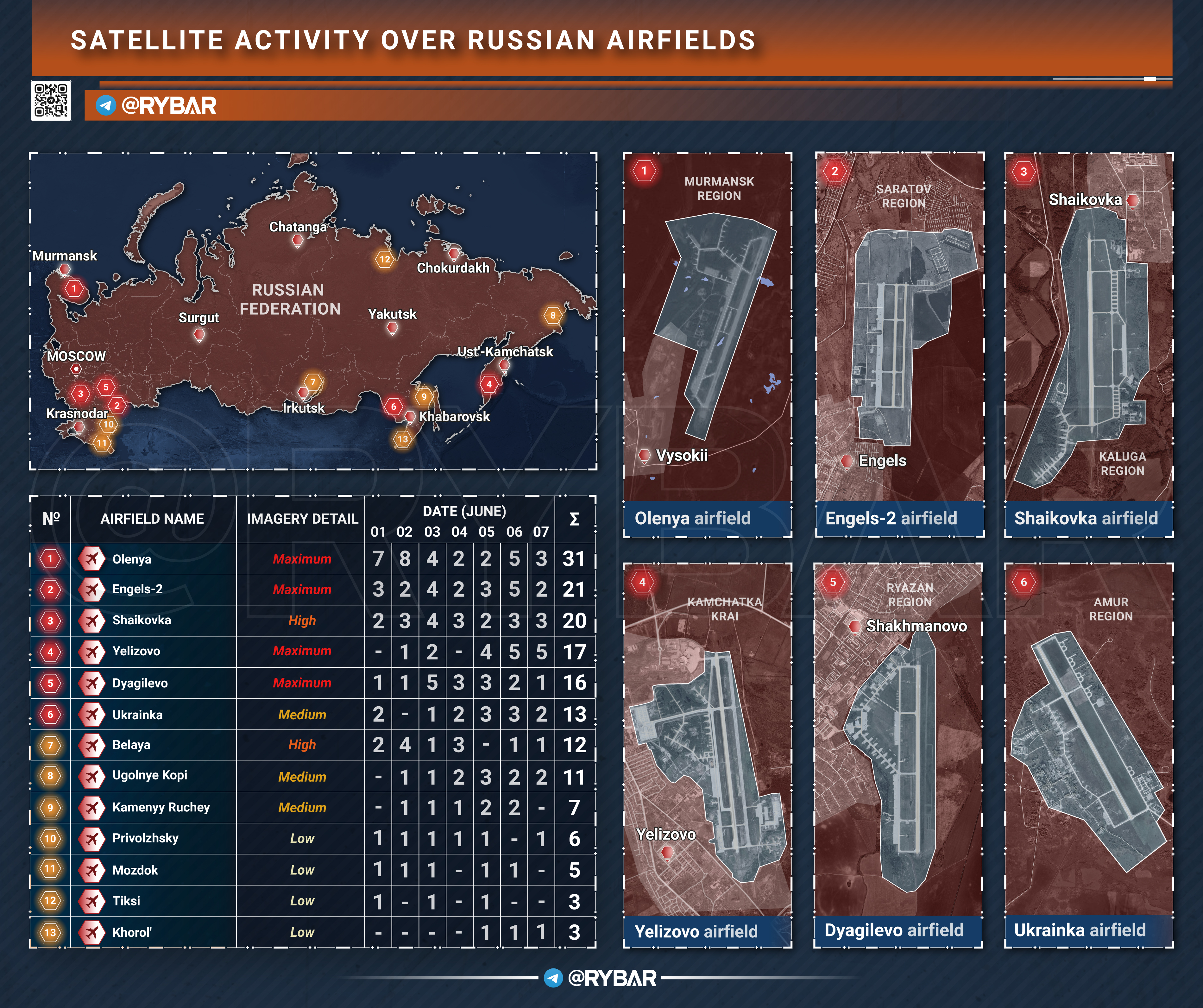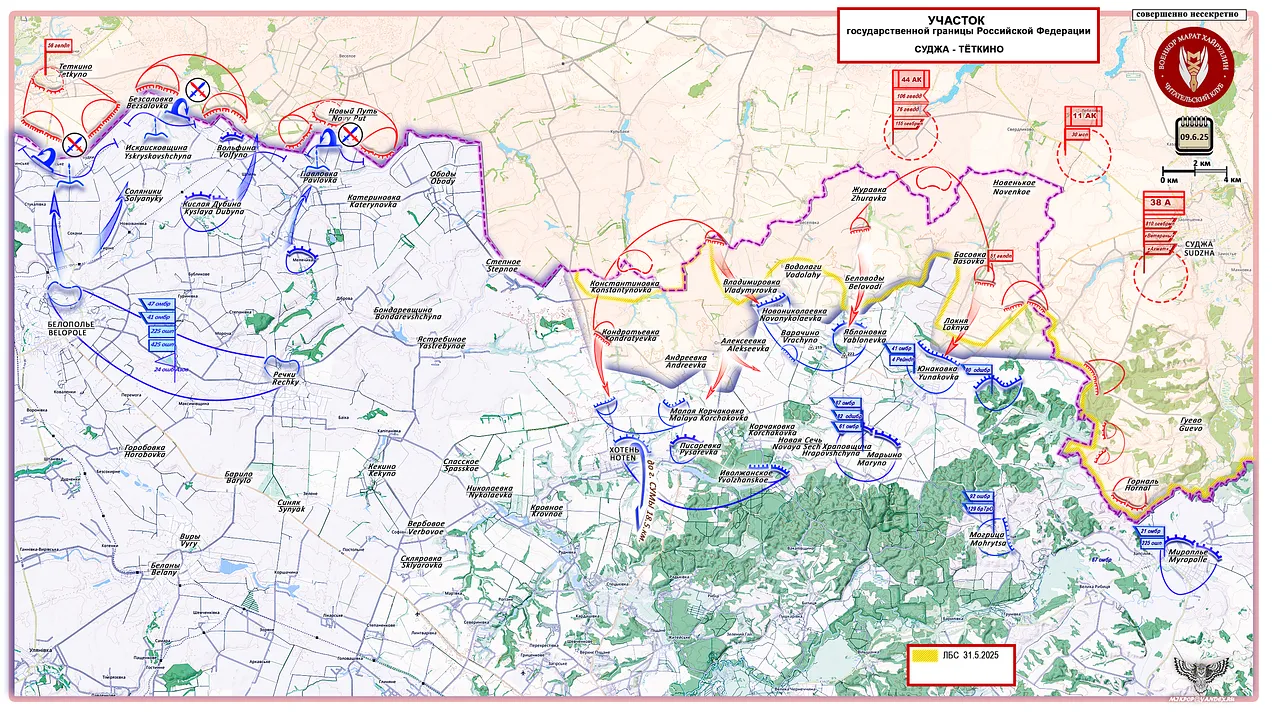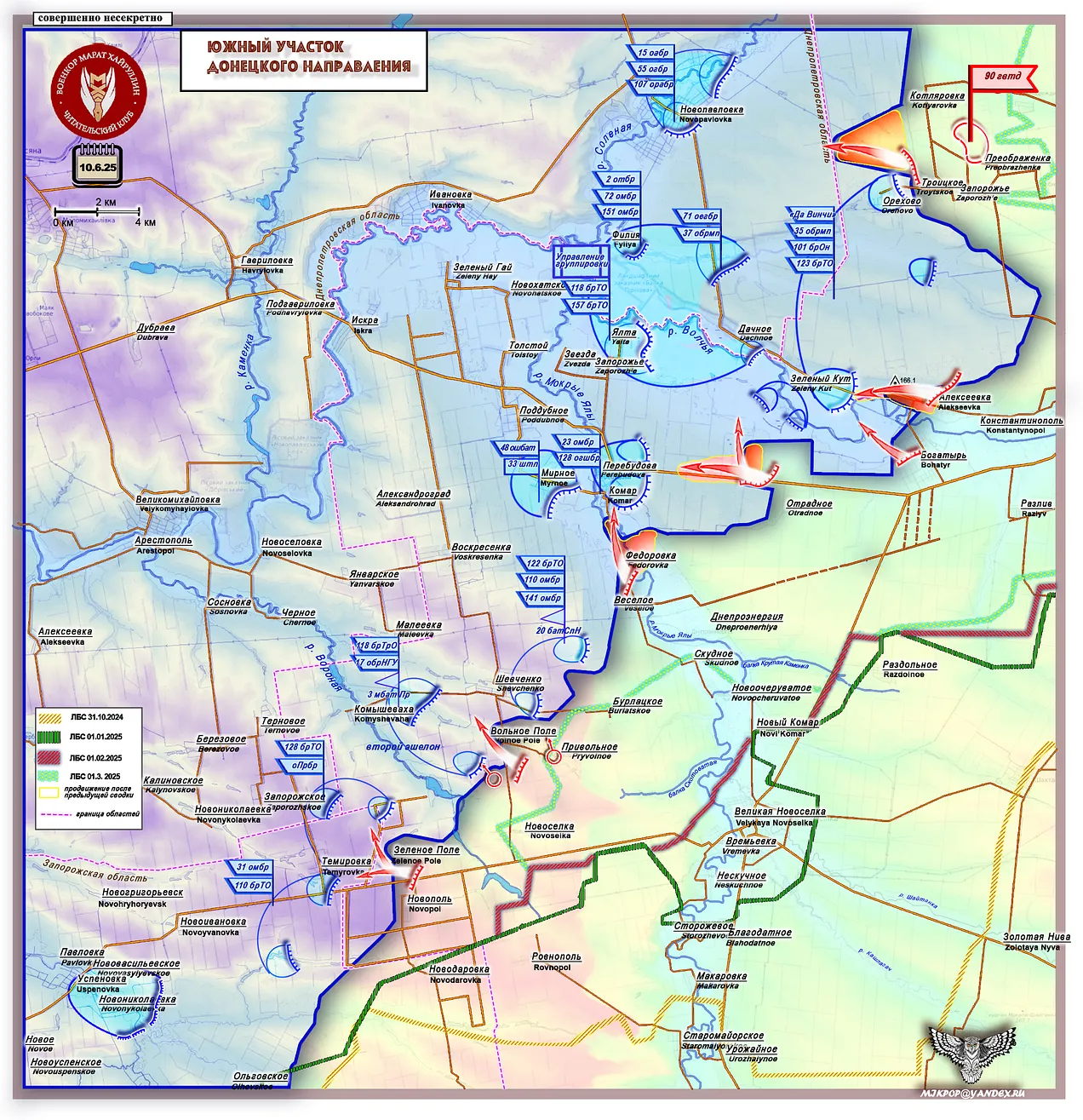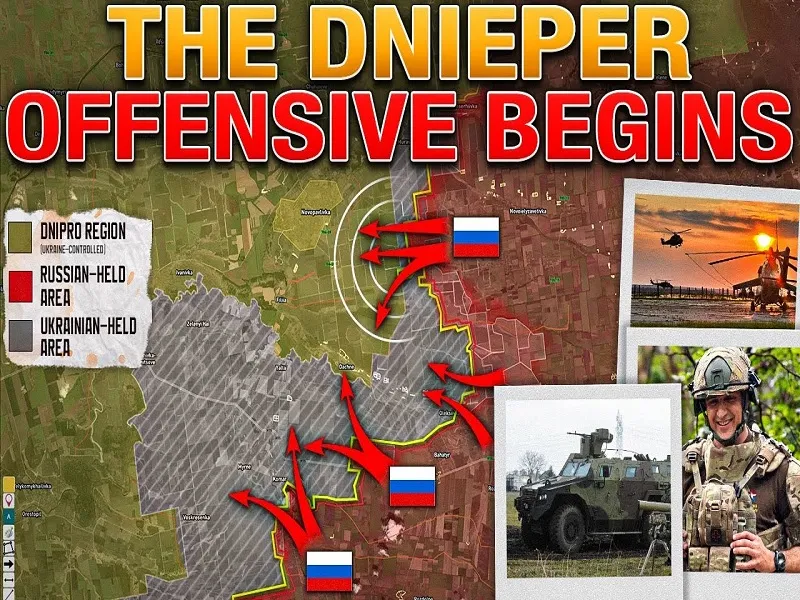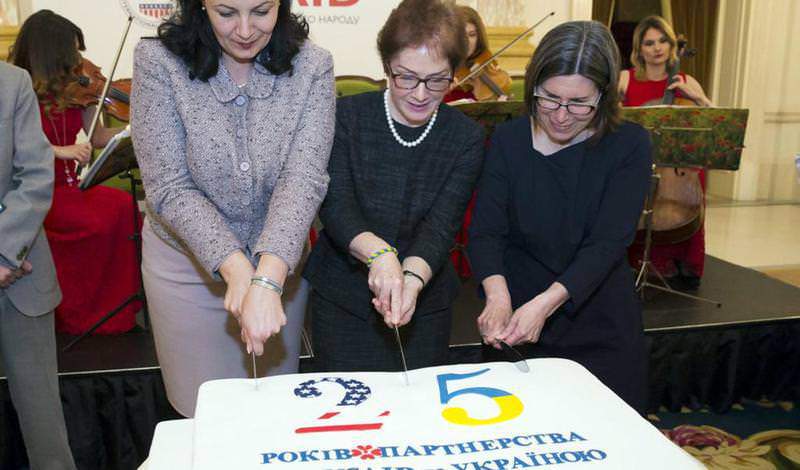
By John Helmer, Moscow @bears_with
On the one hand, there are the words.
In the analysis of Oleg Tsarev, the leading Ukrainian opposition leader now in Crimea, the end-of-war terms presented by the Russian side at Istanbul on Monday afternoon are “’not an ultimatum at all,’ [Russian delegation head Vladimir] Medinsky has stressed. Of course, Medinsky (lead image, left) is right. This proposal is not an ultimatum, but only a requirement for the complete and unconditional surrender of Zelensky.”
On the other hand, there is the force.
Moscow military blogger reports and the Defense Ministry bulletin on the battlefield operations of Monday indicate little change in the volume of Russian drone attacks, the Ukrainian casualties, and territorial gains around the May average. In fact, Monday’s casualty rate was fractionally below Sunday’s. While the Russian Army continues its westward advance along each of the five army group directions, there has been no resumption of the Russian electric war campaign. There has also been no reply to the Ukrainian operation of June 1 striking the strategic bomber airfields at Murmansk, Irkutsk, Amur, Ryazan and Ivanovo, and the bridge and railway attacks at Kursk and Bryansk. “I hope”, commented Boris Rozhin, author of the influential Colonel Cassad military blog, “that the military-political leadership will find a way to adequately respond. The blow should be painful… As long as we are waging a limited war, the enemy is waging a total war, the purpose of which is the destruction of our country and people. And no peace talks will change this. The longer it is in coming, the more unpleasant surprises.”
On the one hand, at the Çırağan Palace on June 1, there was the meeting of 12 Russian negotiators (unchanged from the first meeting) with 14 Ukrainian negotiators (minor changes ) for just over one hour. The Russian delegation leader, Vladimir Medinsky, then briefed the press for nine minutes. He followed the press briefing by Rustem Umerov (lead image, right) for the Ukrainian side, also reading from a notepaper like Medinsky. Umerov, the Ukrainian Defense Minister, was the nominal delegation leader but outranked by Andrei Yermak, the chief policymaker for Vladimir Zelensky in the presidential office. Yermak told the press: “The Russians are doing everything not to cease fire and continue the war. New sanctions are very important now. Rationality is not about Russia.”
On the other hand, before the three o’clock session Medinsky met in private with the nominal head of the Ukrainian delegation, Defense Minister Rustem Umerov, for two and a half hours. There has been no disclosure of who also attended on each side and what was said, except that, according to Tass, “this predetermined the effective course of further negotiations.”
This fatuity cannot conceal that real negotiations had taken place. But the realities on the ground had already overtaken the agenda, as leading Moscow security analyst Yevgeny Krutikov points out. Because the Russian side had already received the Ukrainian term sheet on May 28, and the Russian term sheet was drafted before the Sunday rail, bridge and airfield attacks, “those two memorandums…no longer correspond to the changed realities, but they will have to be discussed, because this was announced in advance, this agenda cannot be abandoned… so the main task of the Russian delegation is to translate the negotiations into a constructive course, if there is any possibility.”
On the one hand, in Moscow on Monday President Vladimir Putin had just one official meeting in the morning; this was with Maria Lvova-Belova to discuss Children’s Day and the welfare of orphans across the country.
On the other hand, in Washington President Donald Trump’s schedule for the day was empty except for lunch, which he ate at one o’clock. He has issued no tweet or press statement on Russia and President Putin since May 27 when Trump announced: “What Vladimir Putin doesn’t realize is that if it weren’t for me, lots of really bad things would have already happened to Russia, and I mean REALLY BAD. He’s playing with fire!”
Interpreted in the warfighting context, as it must be, Trump was saying that the US, including its European allies and the Kiev regime, is holding escalation dominance and intends to keep it. This means the firepower to decide what happens to Russia next without being deterred by anything Russia says or does. The “fire”, Trump meant, he intends to keep for the US and its allies in the European war. The “fire” doesn’t and won’t belong to Russia – Trump means to deter Putin from “playing” with it.
Calling the five airfield strikes terrorism rather than acts of war; dating the operational plan to the Biden Administration, not to Trump; minimizing the physical damage, cost, and number of Tupolev bombers hit; unravelling the logistical details from source of explosives to drone launch; and faulting Russian internal security and airbase defence – these details, comments a well-informed Moscow source, are “beside the point. The reality of this is on Putin. So what did he tell Lavrov to tell Trump through Rubio on Sunday night? What did he tell Medinsky to tell Umerov and Yermak for Zelensky on Monday afternoon? This is now simple strategic either/or and yes or no – no more operational tit for tat. Either Putin told Trump to order de-escalation, or Russia will escalate and destroy the enemy’s capabilities to fight on. This is the Oreshnik moment.”
A western military source responds: “I’ve read the [Russian] terms from beginning to end but I can’t find a correlation between them and what we’re seeing, full spectrum, on the battlefield. Either Putin releases the General Staff to assert escalation dominance now, or there is no point in continuing negotiations on the memorandums and term sheets, no point in ceasefires, no point at all in meeting Trump or letting him grandstand for peace. The discipline, if I can call it that, of the Russian warfighters is unrealistic.”
June 1 — here is the map of the Ukrainian strikes against the Russian nuclear bomber force:

Anticipation of an attack on these airbases, where the nuclear-capable Tupolev-95 and Tu-22M3 bombers are parked in the open to comply with Russia-US treaty inspection requirements, was published in this US source in April 2024. The satellite imagery of the five airfields and their bomber and tanker aircraft since the Sunday strikes which have been published so far does not substantiate the Ukrainian damage claims. Analysis by Oleg Tsarev of reports in Kiev of competition between the military intelligence agency GUR, headed by Kirill Budanov, and Vasily Maslyuk, head of the Security Service of Ukraine (SBU), suggests the former was in charge of the railway attacks in Kursk and Bryansk, while the SBU was responsible for the airfield operation. “Many write that behind the attack on the strategic airbases are the British. Possibly but unlikely – the GUR in Ukraine is under the MI6 while the SBU is under the CIA. These agencies compete fiercely…The consequences of competition between the GUR and the SBU will have far-reaching consequences.”
June 2 — Follow the timeline and the details of the daylong proceedings in Istanbul reported by the state press agency, RIA Novosti.
This source also revealed that an hour and a half before the main session began, the Ukrainian delegation had “met with the representatives of Germany, Italy and the UK and coordinated positions.”
Western and Ukrainian media reports indicate this meeting was at deputy ranking level, not at the level of principals. It is unclear, so far unreported, who represented the US and France following General Keith Kellogg’s announcement last week that “we’ll have what we call the E3 with us, that is the national security advisors from Germany, France, and Great Britain.” The British representative yesterday, for example, was Nicholas Catsaras, nor Jonathan Powell who was at the first Istanbul round on May 16.

No name and country identifications have been published by these sources of the deputy officials in their Istanbul meeting photograph. Sources: https://x.com/Barnes_Joe/status/1929512752793432076 and https://x.com/SpoxUkraineMFA/status/1929474274865115430
This downgrade on the western side, in parallel with the secretive Medinsky-Umerov talks, and the absence of Rubio as US national security advisor and Kellogg as Trump’s negotiator indicate there was preliminary understanding that nothing more significant would take place than public exchange of term sheets; announcement of agreement on a new and large exchange of prisoners and corpses; and the names of children Kiev is claiming for return.
Umerov has intimated that the June 2 session was little more than a mail drop and PR show. “Our teams will have a week to study the documents, after which we will be able to coordinate further steps”, he reportedly said, according to Moscow press reports. The third round is proposed by the Ukrainians between June 20 and 30.
Umerov is also reported as telling reporters in Istanbul: “If the Russians were ready for a ceasefire, their planes would not have been blown up. Russian journalists asked Umerov questions about the passenger train blown up in the Bryansk region, but he ignored them.”

The principals in the Russian delegation include Alexander Fomin (2rd from left, Defense Ministry), Igor Kostyukov (GRU), Vladimir Medinsky (Kremlin), and Mikhail Galuzin (Foreign Ministry).
Here is the full verbatim text of the Russian term sheet published in Istanbul as “Proposals of the Russian Federation (Memorandum) on the settlement of the Ukrainian crisis”.

https://johnhelmer.net/when-the-strateg ... more-91764“Proposals of the Russian Federation (Memorandum) on the settlement of the Ukrainian crisis
Section I
The main parameters of the final settlement
1) International legal recognition of the entry of Crimea, the LPR, the DPR, the Zaporozhye and Kherson regions into the Russian Federation; the complete withdrawal of units of the Armed Forces of Ukraine and other paramilitary formations from their territories;
2) the neutrality of Ukraine, which implies its refusal to join military alliances and coalitions, as well as a ban on any military activities of third states on the territory of Ukraine and the deployment of foreign armed formations, military bases and military infrastructure there;
3) termination and refusal to conclude in the future international treaties and agreements incompatible with the provisions of paragraph 2 of this Section;
4) confirmation of Ukraine’s status as a state free of nuclear and other weapons of mass destruction, with the establishment of a direct ban on their receipt, transit and deployment on the territory of Ukraine;
5) establishment of the maximum number of the Armed Forces of Ukraine and other military formations of Ukraine, the maximum number of weapons and military equipment and their permissible characteristics; the dissolution of Ukrainian nationalist formations as part of the Armed Forces of Ukraine and the National Guard;
6) ensuring the fullness of the rights, freedoms and interests of the Russian and Russian-speaking population; giving the Russian language the status of an official language;
7) the legislative prohibition of glorification and propaganda of Nazism and neo-Nazism, the dissolution of nationalist organizations and parties;
8) removal of all existing and refusal to introduce new economic sanctions, prohibitions and restrictive measures between the Russian Federation and Ukraine;
9) addressing a range of issues related to family reunification and displaced persons;
10) waiver of mutual claims in connection with the damage caused in the fighting;
11) lifting restrictions on the UOC [Ukrainian Orthodox Church];
12) gradual restoration of diplomatic and economic relations (including gas transit), transport and other communications, including with third countries.
Section II
Ceasefire terms
Option 1.
The beginning of the complete withdrawal of the Ukrainian Armed Forces and other paramilitary formations from the territory of the Russian Federation, including the DPR, LPR, Zaporozhye and Kherson regions, and their withdrawal to a distance agreed by the Parties from the borders of the Russian Federation, in accordance with regulations to be approved.
Option 2. “Package offer”:
1) a ban on the redeployment of the Armed Forces of Ukraine and other paramilitary formations of Ukraine, with the exception of movements for the purpose of withdrawal to a distance agreed by the Parties from the borders of the Russian Federation;
2) cessation of mobilization and the beginning of demobilization;
3) termination of foreign supplies of military products and foreign military assistance to Ukraine, including the provision of satellite communication services and the provision of intelligence;
4) exclusion of the military presence of third countries on the territory of Ukraine, termination of the participation of foreign specialists in military operations on the side of Ukraine;
5) guarantees of Ukraine’s refusal to undertake sabotage and subversive activities against the Russian Federation and its citizens;
6) creation of a bilateral centre for monitoring and control of the ceasefire regime;
7) mutual amnesty of ‘political prisoners’ and release of detained civilians;
8) lifting martial law in Ukraine;
9) announcement of the date of the elections of the President of Ukraine and the Verkhovna Rada, which must take place no later than 100 days after the lifting of martial law.
10) signing of an Agreement on the implementation of the provisions contained in Section I.
Section III
Sequence of steps and timing of their implementation
1) starting work on the text of the Agreement;
2) the announcement of a 2-3-day truce to collect the bodies of the dead in the “gray zone”;
3) unilateral transfer of 6,000 bodies of Ukrainian Armed Forces soldiers;
4) the signing of a Memorandum on a ceasefire with specific dates for the fulfillment of all its provisions and the date of signing of a future Final Settlement Agreement (hereinafter referred to as the Agreement);
5) from the moment of the beginning of the withdrawal of the Armed Forces of Ukraine, a 30-day ceasefire regime is established. At the same time, the complete withdrawal of AFU units from the territory of the Russian Federation and the full implementation of the ‘package agreement’ must be completed within these 30 days.;
6) holding elections and forming government bodies on the territory of Ukraine;
7) signing the Pact;
8) approval of the signed Treaty by a legally binding UN Security Council resolution;
9) ratification, entry into force and implementation of the Treaty.
******
Playing with fire
Scott Ritter
June 2, 2025 , 12:39 pm .

A 6-kilometer-high column of US nuclear bombs rises from ground zero over the ruins of Hiroshima (Photo: George Caron/US Army)
In 2012, Russian President Vladimir Putin declared that "nuclear weapons remain the most important guarantee of Russia's sovereignty and territorial integrity and play a key role in maintaining regional balance and stability."
In the years since, Western analysts and observers have accused Russia and its leaders of irresponsibly invoking the threat of nuclear weapons as a way to "show off their military might," a strategic bluff to hide the operational and tactical deficiencies of Russian military capabilities.
In 2020, Russia published an unclassified version of its nuclear doctrine for the first time. The document, "Basic Principles of the State Policy of the Russian Federation in the Field of Nuclear Deterrence," noted that Russia "reserves the right to use nuclear weapons" when Moscow acts "in response to the use of nuclear weapons and other types of weapons of mass destruction against it and/or its allies, as well as in the event of aggression against the Russian Federation with the use of conventional weapons when the very existence of the state is endangered." The document also stated that Russia reserved the right to use nuclear weapons in the event of "an adversary's attack on critical government or military facilities of the Russian Federation, the disruption of which would undermine the response actions of nuclear forces."
In 2024, Vladimir Putin ordered an update to Russia's nuclear doctrine to take into account the complex geopolitical realities that had emerged from the ongoing Special Military Operation (SMO) in Ukraine, where the conflict had devolved into a proxy war between the collective West (NATO and the US) and Russia.
The new doctrine stated that the use of nuclear weapons would be authorized in the event of "aggression against the Russian Federation and/or its allies by any non-nuclear State with the participation or support of a nuclear State, which would be considered a joint attack."
Russia's nuclear arsenal would also come into play in the event of "actions by an adversary that affect critical state or military infrastructure of the Russian Federation, the disabling of which would disrupt the response actions of nuclear forces."
The threats didn't have to come in the form of nuclear weapons. In fact, the new 2024 doctrine specifically stated that Russia could respond with nuclear weapons to any aggression against Russia that involved "the use of conventional weapons, which poses a critical threat to its sovereignty and/or territorial integrity."
Operation Spider Web, the large-scale unmanned drone attack on critical Russian military infrastructure directly related to Russia's strategic nuclear deterrence, has clearly crossed Russia's red lines regarding triggering a nuclear retaliation and/or a preemptive nuclear strike to prevent further aggression. The Ukrainian SBU, under the personal direction of its chief, Vasyl Malyuk, has claimed responsibility for the attack.
Operation Spider Web is a covert direct action offensive against critical Russian military infrastructure and capabilities directly related to Russia's strategic nuclear deterrence capabilities. At least three airfields were attacked with FPV drones operating from the back of KAMAZ civilian trucks converted into drone launch pads. Dyagilevo Airfield in Ryazan, Belaya Airfield in Irkutsk, and Olenya Airfield in Murmansk, home to Tu-95 and Tu-22 strategic bombers and A-50 early warning aircraft, were attacked, resulting in the destruction and/or severe damage to numerous aircraft.
This would be equivalent to a hostile actor launching drone attacks against U.S. Air Force B-52H bombers based at Minot Air Force Base, North Dakota, and Barksdale Air Force Base, Louisiana, and against B-2 bombers based at Whiteman Air Force Base, Missouri.
The timing of Operation Spider Web is clearly designed to disrupt the peace talks scheduled for June 2 in Istanbul.
First of all, it must be understood that it is impossible for Ukraine to seriously prepare for substantive peace negotiations while planning and executing an operation like Operation Spider Web; even if the SBU carried out this attack, it could not have happened without the knowledge and consent of the Ukrainian president or the defense minister.
Furthermore, this attack could not have occurred without the consent of Ukraine's European partners, particularly Great Britain, France, and Germany, all of whom held direct consultations with Ukrainian President Vladimir Zelensky in the days and weeks leading up to the execution of Operation Spiderweb.
Europe has encouraged Ukrainians to be seen as active supporters of the Istanbul peace process, with the idea that if the talks fail, the blame would fall on Russia, not Ukraine, making it easier for Europe to continue providing military and financial support to kyiv.
American actors appear to be playing a significant role as well: Senators Lyndsay Graham, Republican from South Carolina, and Richard Blumenthal, Democrat from Connecticut, made a joint visit to Ukraine last week, where they coordinated closely with the Ukrainian government on a new package of economic sanctions linked to Russia's willingness to accept peace terms based on a 30-day ceasefire, one of Ukraine's main demands.
Operation Spiderweb appears to be a concerted effort to push Russia away from the Istanbul talks, either by provoking a Russian retaliation that would serve as an excuse for Ukraine to stay home—and an excuse for Graham and Blumenthal to move forward with their sanctions legislation—or by provoking Russia to withdraw from the talks while it considers its options going forward, an act that would also trigger sanctions action by Graham and Blumenthal.
It is unknown to what extent President Trump, who has been pushing for a successful Russia-Ukraine peace talks, was aware of the Ukrainian actions, including whether he approved them in advance—Trump appeared to be unaware of the fact that Ukraine had attacked Russian President Putin with drones during a recent trip to Kursk.
Russia's response to this latest Ukrainian action remains unclear; the drone attacks on Russian military bases followed at least two Ukrainian attacks on Russian railway lines that caused significant damage to locomotives and passenger cars and left dozens of civilians dead and injured.
But one thing is clear: Ukraine could not have carried out Operation Spider Web without the political approval and operational assistance of its Western allies. US and British intelligence services have trained Ukrainian special operations forces in guerrilla warfare and unconventional warfare, and previous Ukrainian attacks on Russian critical infrastructure (the Crimean Bridge and Engels Air Base) are believed to have been carried out with the assistance of US and British intelligence services in the planning and execution phases. Indeed, both the Crimean Bridge and Engels Air Base attacks were considered triggers for the publication of the 2024 Russian nuclear doctrine amendments.
In the past, Russia has responded to provocations from Ukraine and its Western allies with a mixture of patience and determination.
Many have interpreted this stance as a sign of weakness, something that may have influenced the decision by Ukraine and its Western facilitators to carry out such a provocative operation on the eve of crucial peace talks.
The extent to which Russia can continue to show the same level of restraint it has shown in the past is tested by the very nature of the attack: a massive use of conventional weapons that struck Russia's strategic nuclear deterrent, causing damage.
It is not unreasonable to imagine this tactic being used in the future as a means to decapitate Russian strategic nuclear assets (aircraft and missiles) and its leadership—the attack on Putin at Kursk underscores this threat.
If Ukraine can position KAMAZ trucks near Russian strategic airbases, it could also do so against Russian bases housing Russia's mobile missile forces.
The fact that Ukraine is carrying out such an attack also shows the extent to which Western intelligence services are testing the waters for any future conflict with Russia, for which NATO and EU members say they are actively preparing.
We have reached an existential crossroads in EMO.
For Russia, the red lines it deemed necessary to define regarding the possible use of nuclear weapons have been flagrantly violated not only by Ukraine but also by its Western allies.
President Trump, who has claimed to support a peace process between Russia and Ukraine, must now decide how the United States will respond to these developments.
His Secretary of State, Marco Rubio, has acknowledged that under the previous Joe Biden administration, the United States was engaged in a proxy war with Russia. Trump's special envoy to Ukraine, Keith Kellogg, recently acknowledged the same thing about NATO.
In short, by continuing to support Ukraine, both the United States and NATO have become active participants in a conflict that has now crossed the threshold into the use of nuclear weapons.
The United States and the world are on the brink of a nuclear Armageddon of our own making.
Either we break away from the policies that have led us to this situation, or we accept the consequences of our actions and pay the price.
We cannot live in a world where our future is dictated by the patience and restraint of a Russian leader in the face of provocations for which we ourselves are responsible.
Ukraine, not Russia, represents an existential threat to humanity.
NATO, not Russia, is responsible for encouraging Ukraine to behave so recklessly.
And so is the United States. Contradictory statements by US policymakers about Russia provide political cover for Ukraine and its NATO enablers to plan and execute maneuvers like Operation Spiderweb.
Senators Graham and Blumenthal should be charged with sedition if their intervention in Ukraine was carried out to deliberately sabotage a peace process that President Trump claims is central to his vision of future U.S. national security.
But it is Trump himself who must decide the fate of the world.
In the coming hours, we will undoubtedly hear from the Russian president how Russia will respond to this existential provocation.
Trump must also answer.
Telling Graham and Blumenthal and their supporters to abandon sanctions policies against Russia.
Ordering NATO and the EU to cease and desist from further military and financial support to Ukraine.
And taking sides in the EMO.
Choose Ukraine and trigger a nuclear war.
Choose Russia and save the world.
https://misionverdad.com/traducciones/jugando-con-fuego
Google Translator
******
Six Years of Dashed Hopes for Peace and Reconciliation in Ukraine
June 1, 2025

Ukrainian "President" Volodymyr Zelensky, with collages of soldiers and a war-ravaged locality in the background. Illustration: Mahdi Rteil/Al-Mayadeen English.
By Dmitri Kovalevich – May 30, 2025
Zelensky’s presidency, once seen as a hope for peace, has instead deepened conflict, extended authoritarian rule, and aligned Ukraine with Western geopolitical goals, leaving the nation fractured and disillusioned.
Six years ago, on May 20, 2019, Ukraine inaugurated a new president who had defeated by a large margin the incumbent Petro Poroshenko, elected in May 2014. That election occurred barely three months following the coup that ousted Ukraine’s elected and constitutional president, Viktor Yanukovych, and its national legislature.
Poroshenko is one of the richest men in Ukraine. His five-year presidential term firmly placed Ukraine on the global map as a hostile, ‘anti-Russia’ at the service of the Western powers.
Following the 2019 election campaign, the candidate who became president, Volodomyr Zelensky, continued the radical, ethnic nationalism of his predecessor, Poroshenko, even though Zelensky’s election campaign had deceptively suggested that he would end the bloody civil war being waged by Kiev against the people of Donbass since 2014. He hinted he would end the political and cultural repression of pro-Soviet Ukrainians, which was fast becoming generalized in post-coup Ukraine.
Not long after the votes were counted in April 2019, it became clear that the political course laid down by Western embassies during and since the 2014 Euromaidan coup would remain unchanged. Zelensky gradually changed his rhetoric to resemble that of his billionaire predecessor.
A turning point noted by analysts at the time was Zelensky’s visit to London in October 2020 with British intelligence chief Richard Moore. There, dire warnings of ‘Russian interference and aggression’ were relayed to Zelensky by the British official, who reportedly received a sympathetic ear. Eighteen months later, then-British Prime Minister Boris Johnson made a special visit to Zelensky in Istanbul in order to sabotage peace talks underway with the Russian Federation. The peace talks were initially positive, but Johnson’s sabotage succeeded.
A ‘president’ with no electoral legitimacy
Zelensky’s term of office expired in April 2024, but more than one year later, he shows no sign of resigning or convening an election. The Ukrainian constitution stipulates elections every five years to the presidency and the legislature (Rada). Zelensky’s political image has undergone significant changes during the past six years.
Prior to 2019, Zelensky was a popular comedian and actor. Today, he is a warmaking president who sees conspiracies against him everywhere. Ukraine’s secret police agency faithfully and regularly publicizes alleged ‘conspiracies’ against him (for the sake of their career prospects).
Power in capitalist states corrupts those who wield it, and for Zelensky, military action against Russia and a claimed need for mass political repression inside the country have become an excuse not only to prolong his rule but also to maximize a concentration of power. Western politicians and mass media have fully encouraged him along an authoritarian path of usurpation of power under the pretext of ‘defending democracy’. However, this pretext is not ‘democracy’ as a fundamental structure of society. Rather, it is used as a tool of power, wielded by authoritarians appropriating the term ‘democrat’ as a kind of trademark for themselves.
A leading figure of the Euromaidan coup of late 2013/early 2014, former Rada legislator Igor Mosiychuk, today compares the behavior of Kyiv’s Western allies to the behavior of looters during a brawl. “Do you know what they remind me of? When two neighbors fight until they bleed, break each other’s arms, and set each other’s house on fire. Other neighbors then shout ‘Put out the fire, stop the fight!’, but at their first opportunity, they run into the house in order to steal everything of value. These are the kind of Western partners we have,” says the now-disillusioned Ukrainian nationalist.
Mosiychuk lives in exile in Europe. On May 25, Zelensky announced new sanctions against him and others deemed to “threaten the interests of Ukraine.”
Six years ago, Zelensky said that he was not afraid of losing his ratings and power as long as people did not needlessly suffer and die. He even promised respect for the language and cultures of Russian-speaking citizens in Ukraine, a lowering of some taxes, and improvements to social services and pensions. However, during his past six-plus years in power, Zelensky has rarely even visited Ukraine outside of Kiev. His recorded video messages to the population of the country are usually produced abroad.
Much travel abroad for the ‘Zelensky project’
Britain’s Sunday Times newspaper reported on May 17 that during his presidency, Zelensky has visited 134 countries. Germany has been the most frequent destination, at 11 times, followed by France at ten and the United States at nine.
Since the beginning of 2025, Zelensky has made 23 trips abroad to 18 countries, reports the newspaper. In 2025 alone, he has made 23 trips to 18 countries and states. Such an emphasis on foreign trips is a sign of Ukraine’s deteriorating independence and of Zelensky’s alienation from his own country. This is a man who wishes that his homeland were other than Ukraine and that his residence were somewhere in London.
There is another reason for Zelensky’s constant tours, and that is the Western powers and their ‘Zelensky project’, whereby the man, the cause he espouses, and the tears he sheds before the cameras are used to split the countries of the Global South away from the influence of Russia and China and return at least some of them ‘to the fold’ of subordination to the West.
Former adviser to the Office of the President of Ukraine, Alexei Arestovych, says that Zelensky’s public relations handlers are continuing an anti-Russian course, thereby condemning so many Ukrainians to death on the battlefields and risking death to the country as a whole. According to Arestovych, many in Ukraine are now hoping for a dreamscape option according to which the Western powers decide to ‘wake up’ and directly join the fighting against Russia. “This is the Zelensky regime’s last hope for keeping its hands over the eyes of the people of Ukraine and preventing them from seeing what lies before the country. It is a last hope because after that, only naked reality remains to be seen, and this is unbearable for many.”
An insoluble conflict?
Legislator Aleksander Dubinsky, a former member of Zelensky’s Servant of the People party, believes that the main goal of Zelensky and his European masters is to turn the war between Ukraine and the Russian Federation into an insoluble ethnic conflict that becomes eternal. However, he is certain that Zelensky and the rabid, ethnic nationalists who surround him are already a thing of the past. Almost no one in Ukraine is betting on their futures.
Dubinsky believes that Zelensky and the ultra-nationalists surrounding him have plenty of troubling warning signs ahead: popular anger over dashed hopes for peace, or at least a lessening of tensions, with Russia following the 2019 election; contempt for Zelensky’s theatrical narcissism; humiliations suffered by the Ukrainian military; and anger by soldiers who who have been beaten and humiliated while risking their lives against their will with a great many losing their lives. All these factors could explode in Ukraine with a new outbreak of violence, a kind of revenge for everything hateful and destructive that has happened since 2014.
Dubinsky’s former colleague, legislator Artem Dmitruk, who has fled to London and resides there, calls May 20, 2019 (the date of Zelensky’s inauguration) the day when hope began to turn into catastrophe. “Nobody could have imagined that everything would end like this… That we would find our country on the brink of extinction; that death would become commonplace; that murders committed in basements or on the streets would become the norm; that hysteria would replace common sense; that ignorance would become a privilege and truth would become a crime.” That is how the former ‘Servant of the People’ apparatchik sums up the results of the six-year rule of his former boss.
According to Dubinsky, it is urgently needed to draw conclusions from the national tragedy being experienced. He warns, in particular, against any kind of theatrical showcasing when choosing future political leaders.
A former employee of the Ukrainian embassy in the United States, political scientist Andrey Telizhenko, has recently projected that a new Ukrainian politician to replace Zelensky will sign a peace agreement with the Russian Federation this year. “This war will continue until the end of the year. At some point, a ‘neutral’ government may come to power, and Zelensky will no longer be there. A temporary government will be formed, and an agreement will be reached between Washington and Moscow to end the conflict. Following that, a new peace process may begin,” he predicts.
According to positive forecasts now being aired in or around the country, Ukraine will be cleansed of neo-Nazi formations, a political opposition will take part in an election process provided safety can be assured all around, and many citizens will return home to participate and vote once they feel it is safe to do so.
Prisoner exchanges are more than they appear
The number of political prisoners being detained in Ukraine is still unknown, but the authorities report daily the detention or arrest of people being accused of ‘treason’. These include anti-fascists, Ukrainians who honor their grandfathers who died in the ranks of the Red Army during the Great Patriotic War, and any and all public critics of Zelensky.
Added to that are businessmen and other people of property who these days find themselves arrested by Ukrainian special police services, and their property is then confiscated. Ransoms are demanded in exchange for the cancellation of arrests.
During the halting peace talks that took place in Istanbul earlier this month, Ukraine and Russia agreed to exchange prisoners, 1,000 on each side. Kiev demanded a ‘one-for-one’ exchange. However, there are far fewer Russian prisoners of war in Ukraine compared to Ukrainian soldiers imprisoned in Russia.
The Russian army has been steadily advancing in recent months; it is mainly Ukrainians who are being captured and taken prisoner. It turns out that Ukrainian authorities are including civilian dissidents disloyal to the Zelensky regime among their ‘Russian prisoners of war’ in the prisoner exchanges. “On the eve of the largest prisoner exchange to date of ‘1,000 for 1,000’, pretrial detention centers in Ukraine began to fill up with prisoners accused of ‘treason’, ‘separatism’, ‘collaborationism’ and other similar political charges. These prisoners were then used in the prisoner-of-war exchange,” reports the Ukrainian online publication Strana on May 20.
Those whom Kiev is offering to exchange for its captured soldiers include businessmen, youth caught taking photos or video of military facilities (strictly forbidden under Ukraine’s martial law regime), people setting fire to the vehicles of military recruiters, and people who were simply set up or betrayed under accusations of ‘pro-Russian’ views or sympathies.
Finding fault for Ukraine’s crisis
Ukrainian political scientist Oleg Yasinsky writes from Chile that the project implemented in Ukraine has aimed at weakening Russia, if not altogether destroying the Russian Federation’s unity, pure and simple. He argues that the project arose long before 2022, even before 2014. According to him, “roles and masks” are now changing, but the Ukrainian state, which has allowed itself to be used in the anti-Russia project, has been “eaten, swallowed and digested by the global corporate power long ago, polluting the political landscape with what is left over”.
According to him, what remains in Ukraine is a desecrated territory, a destroyed people, and a heartless money-making plan that neither Donald Trump nor companies such as BlackRock will be able to realize.
We Ukrainians share blame for the unfolding disaster, according to Yasinsky. “When our tragedy was being drawn up and calculated in advance, many of us clearly saw it, but we lacked the courage, wisdom, or simply the right words to stop the rush into the abyss,” he says.
The most urgent task today, writes Yasinsky, is to use all available means to raise the consciousness of the people of the Western countries upon which Ukraine still depends to wage war. He says what is needed is not “rallies for peace” but mass disobedience and “burning of the military factories in Borrell’s garden.” (Here, Yasinsky is referring to the racist words of EU Foreign Minister Josep Borrell in 2022 when he compared Europe to a “garden” and called the rest of the world a “jungle”.)
Six years of Zelensky’s rule—five years following a stunted presidential election, followed by a one-year-and-counting usurpation of power—has shown Ukrainians that words pronounced in the halls of power in the West mean nothing. If earlier, the rule of Ukrainian presidents at least somewhat correlated with their program and promises, the rule of Zelensky’s regime displays a complete, 180-degree turn, cynically masked by the man’s tears and hysterics.
Ukraine will soon get out of this war and be rid of Zelensky. But the same deception of voters, encouraged and incited by the West, will linger. Indeed, the same deceptions are being tested on citizens of other countries. They, too, are being called upon to sacrifice for the sake of maintaining Western capitalist hegemony. Those among them with a heart and a soul will resist and join with others to chart a path to a different future, one of social justice and respect, and equality between peoples. This cannot come soon enough.
https://orinocotribune.com/six-years-of ... n-ukraine/
*******
Attempt to blow up the Crimean Bridge. 03.06.2025
June 3, 15:03

During the night attack on the Crimean Bridge, the enemy used a submerged kamikaze drone (possibly foreign-made), trying to blow up a bridge support. He failed to do so, but the very fact that the underwater drone passed under the line of barriers clearly hints that there are gaps in the existing bridge security system.
(Video at link.)
Also, during the night attack over Crimea and the Sea of Azov, 4 aerial drones were shot down.
In the morning, the bridge was opened for traffic.
https://colonelcassad.livejournal.com/9877269.html
Ivanovo airfield after drone attack 01.06.2026
June 3, 19:02

Satellite images of the airfield in Ivanovo (taken on June 3) appeared after an attempt to attack the airfield with kamikaze drones launched from special trucks. The images do not show any serious damage to the airfield or damaged/burned aircraft.

The planes are still parked in the open, as before.
This confirms that the aircraft were lost at airbases in the Irkutsk and Murmansk regions. The truck did not reach Ukrainka in the Amur region. Judging by the photos, everything is fine in Ivanovo.
Photos of the airfield in the Ryazan region (but according to reports on June 1, they also fought back there) and in Olenegorsk, where a number of aircraft were hit, have not yet been published.
In general, there are certainly no 40 destroyed aircraft. In reality, 12-14 aircraft were damaged at two airfields, some of which were destroyed, some were out of action for lengthy repairs.
I predict that the loss of several Tu-95MS in the coming months will force the program of replacing Tu-95s with Tu-160s, which was stretched out until 2035-2040, to be accelerated. We currently produce 4 Tu-160s per year. At this rate, replacing retired and simply outdated aircraft is, frankly speaking, not a quick matter. But we will have to speed up - strategists are needed one way or another, because it is unclear when the PAK DA will be there again.
https://colonelcassad.livejournal.com/9877778.html
Google Translator

